After waking up at the Hyatt Place Kyoto, we took the train down to Nara to spend the day. We saw many of the ancient capital city’s very tame deer and visited Todai-ji and Kasuga Taisha. While there was some fall foliage to be seen, it wasn’t nearly as good as what we’ve seen in Kyoto on this trip.
Morning
After waking up at the Hyatt Place Kyoto, we headed down to Kyoto Station by subway. We walked through Kyoto Station to reach Kintetsu‘s station on the south side. From there, we bought limited express tickets to Nara. Generally speaking, limited express trains require seat reservations and have an added cost, though this isn’t universally true. We had some time before our train’s departure time to buy breakfast to go. We ate everything on the train.

Our primary meal was this katsu sando, better described in English as a chicken cutlet sandwich. It was OK, much better than McDonald’s but that’s not saying much!
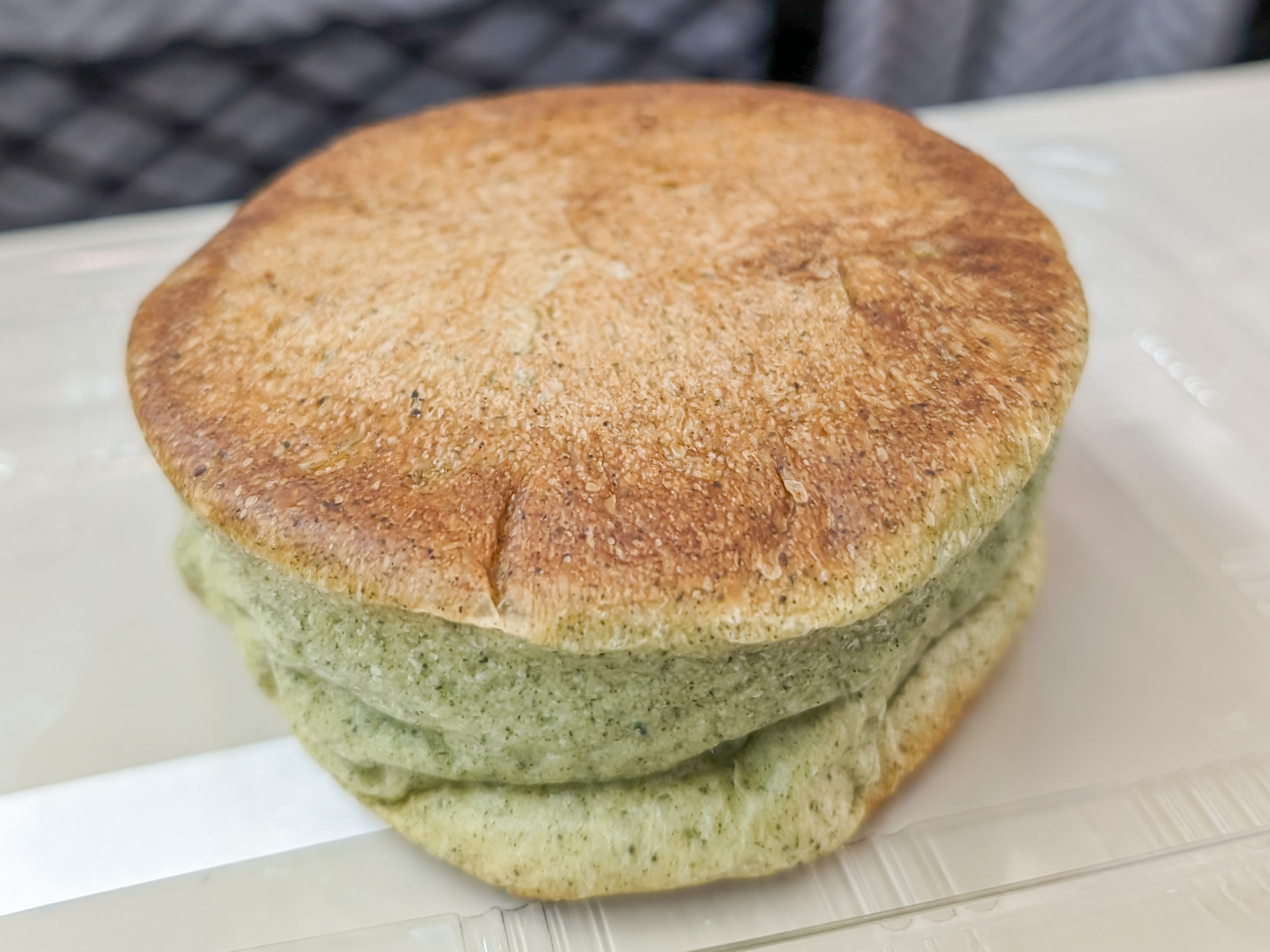

We also got some pastry items. The green melon thing on the right was very different than expected, likely due to differing taste preferences between the US and Japan, or really, the rest of Asia. In the US, we’d expect something of this appearance to have a hard super sweet shell. It wasn’t like that at all!
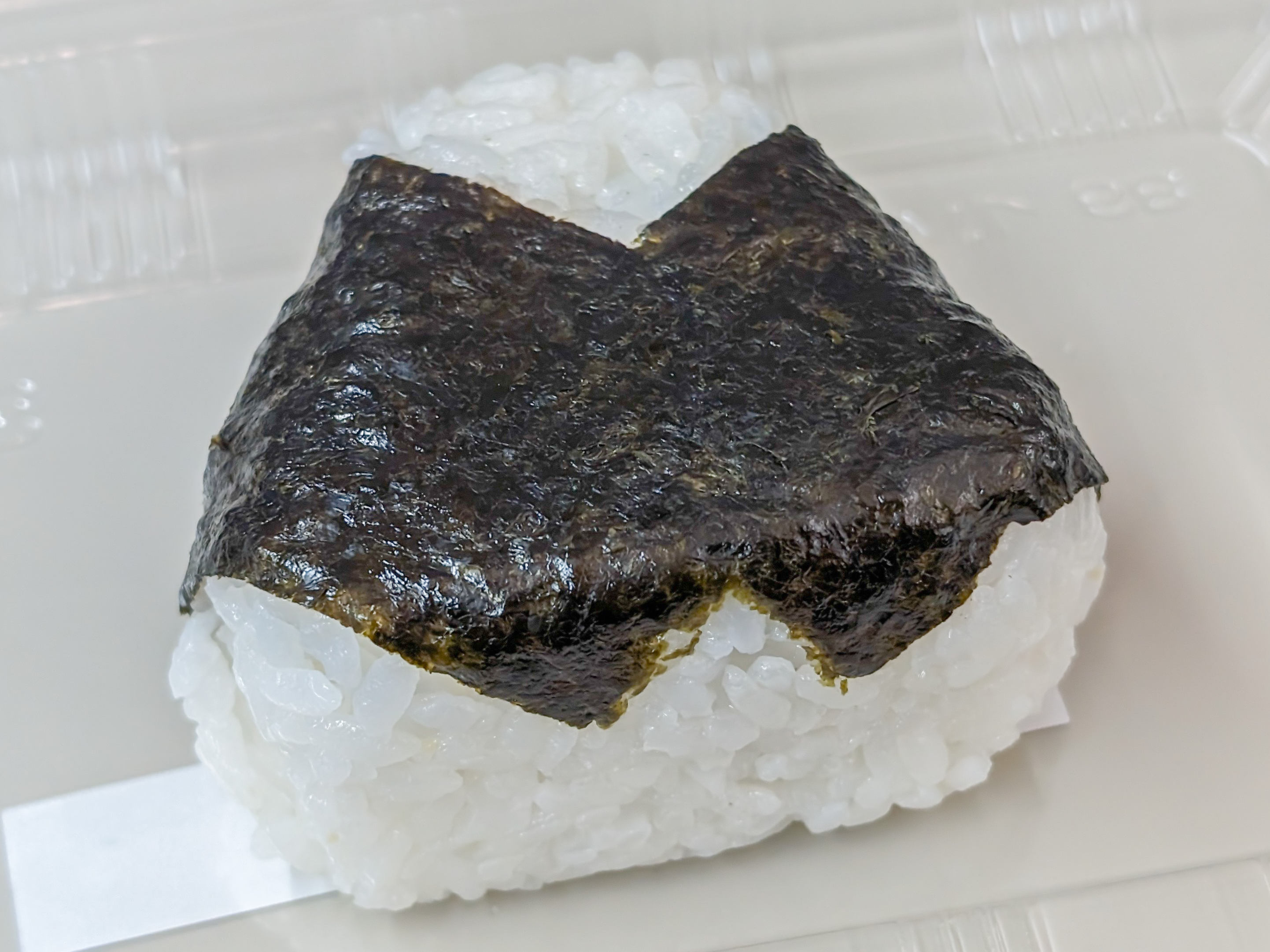

We also picked up an onigiri and essentially an uncut sushi roll. So far, 7-Eleven still has the best prepackaged onigiri!

It takes a bit more than 30 minutes to make the trip on the limited express with just two stops in between. Interestingly, it is possible to go to Nara without changing trains from Marutamachi. The trip takes an hour but time is saved by not having to transfer as some Karasuma line subway trains continue on to become faster than local trains to Nara.
It is possible to get to Nara on JR as well. But it is a bit of a slower trip and the station in Nara is further away from the places we were planing to visit.
Nara

We exited the Kintetsu Nara Station on the north side and started walking to the east, towards Nara Park.
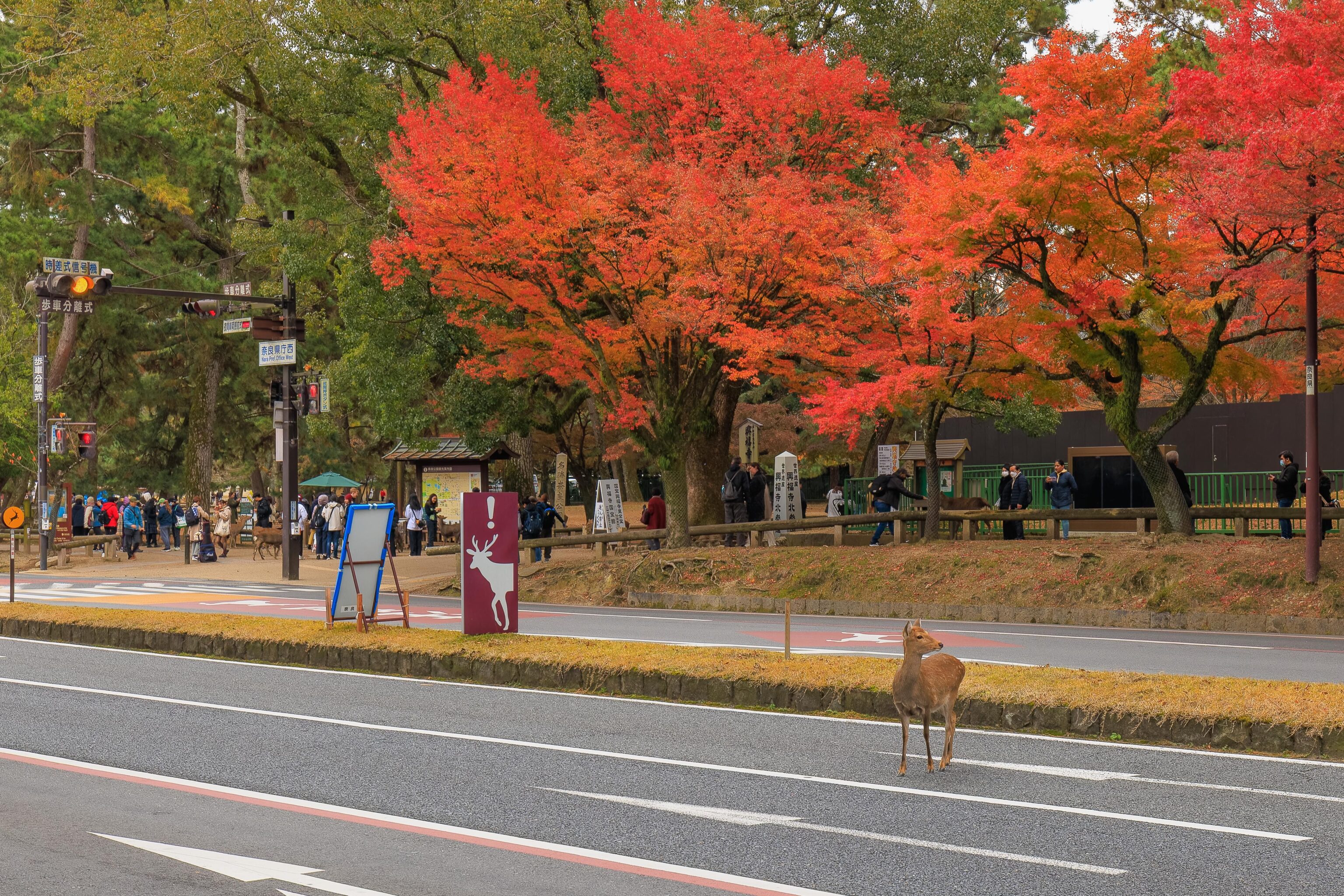
Nara is famous for its deer. We saw one crossing the road right next to a deer warning sign! We also saw a bit of nice fall foliage in the background. Nara isn’t particularly well known for fall foliage but it is nice that we saw some so early in our visit!
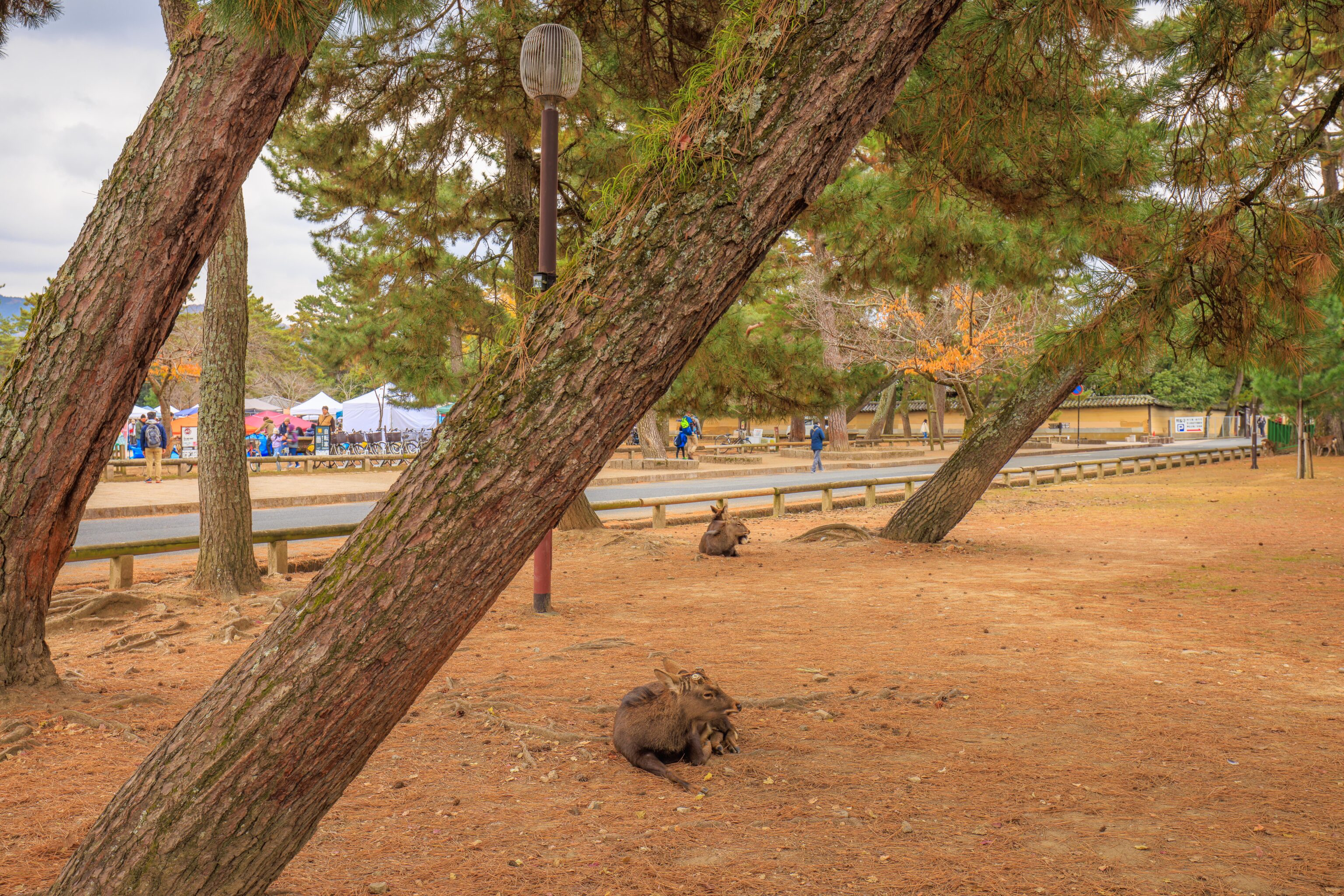
We ended up crossing the road as there were more deer on the south side.

We bought one package of shika senbei (deer crackers) for 200 JPY. The deer know that people are a source of treats! Once they realize you have senbei, they will follow slowly but relentlessly. They may nibble on your clothes and bags. Once you have given away all your senbei, they realize this and stop following!
They have also learned to bow. Or at least, they’ve learned that doing a bowing motion tends to result in being fed!
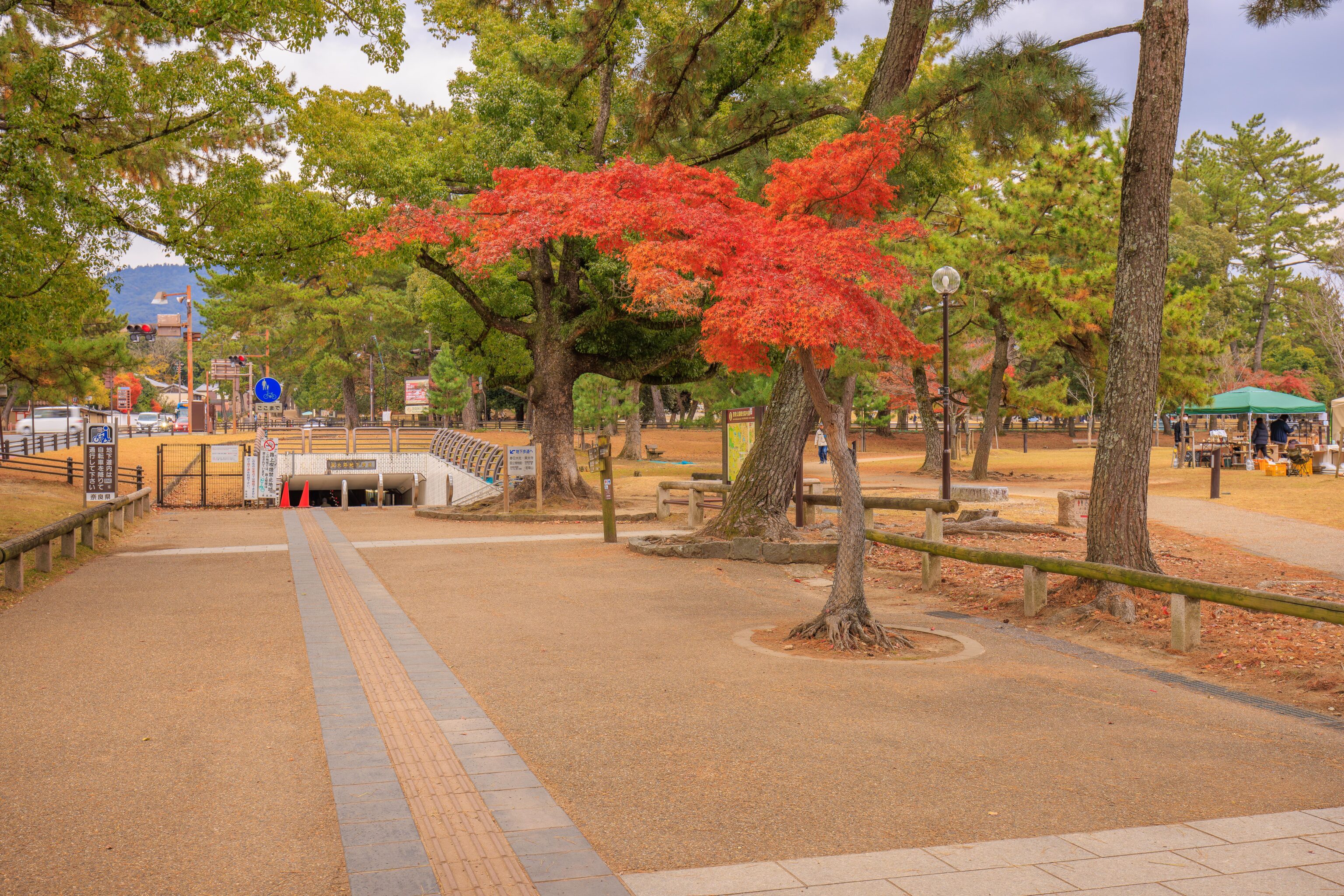
After feeding the deer, we continued walking to the east. It required going through this underpass below a busy intersection.
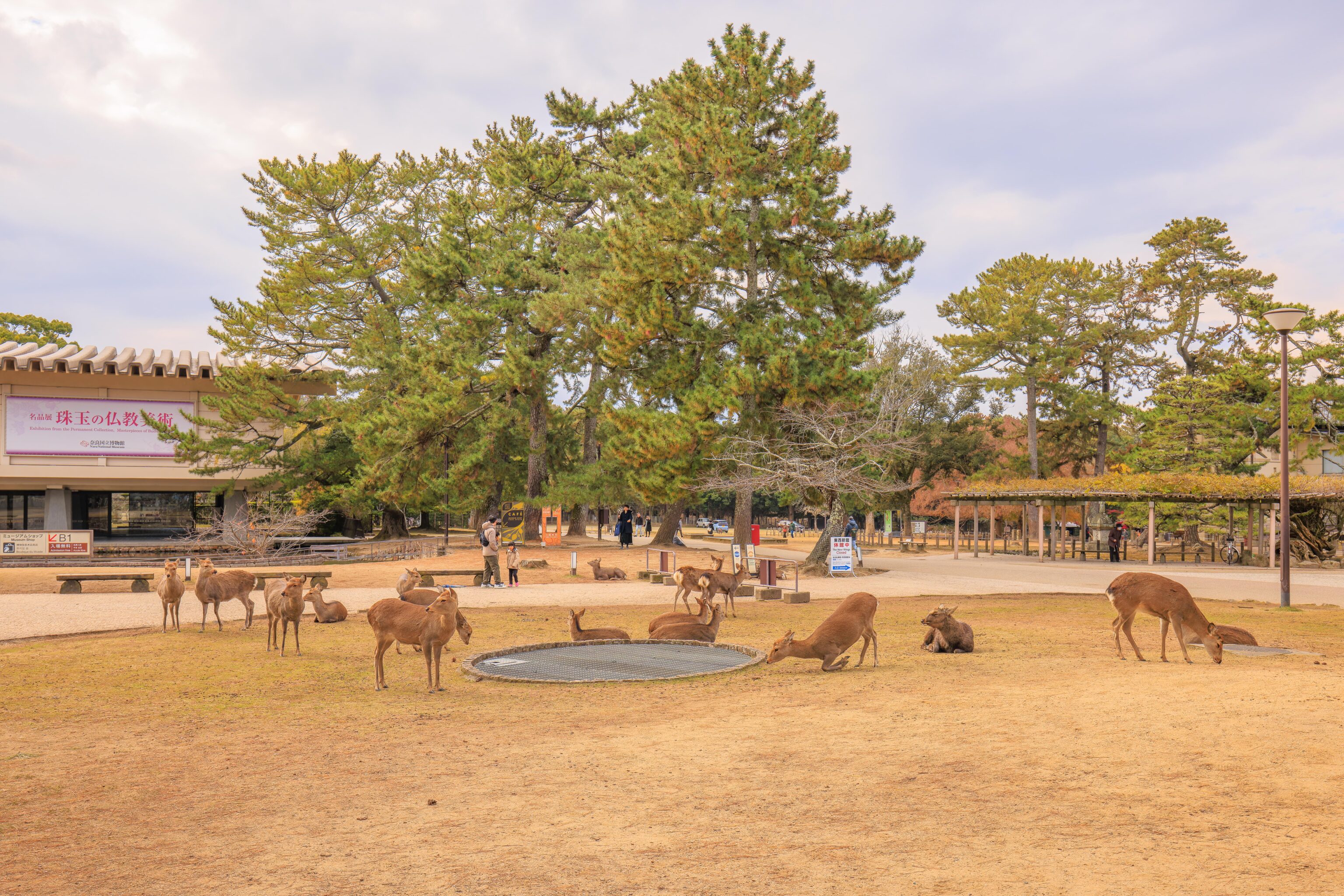
We passed by more deer in front of the Nara National Museum. It wasn’t on our agenda and so we continued on. There is too much to do to do everything!

We continued a bit further to the east until we reached the next block. From there, we turned to the north. The road here becomes a mostly pedestrian area, other than a few vehicles that are probably for the local shops. Of course, there were deer here as well. It was 10 am so the shops were all open but not busy. We did see a ton of people in front of us though.

There seemed to always be a deer cracker vendor in sight! There is one here to the right.


The road crosses over a what was currently a small stream. The riverbed looked like it was pretty wide and damp so it possibly fills up during heavy rains?
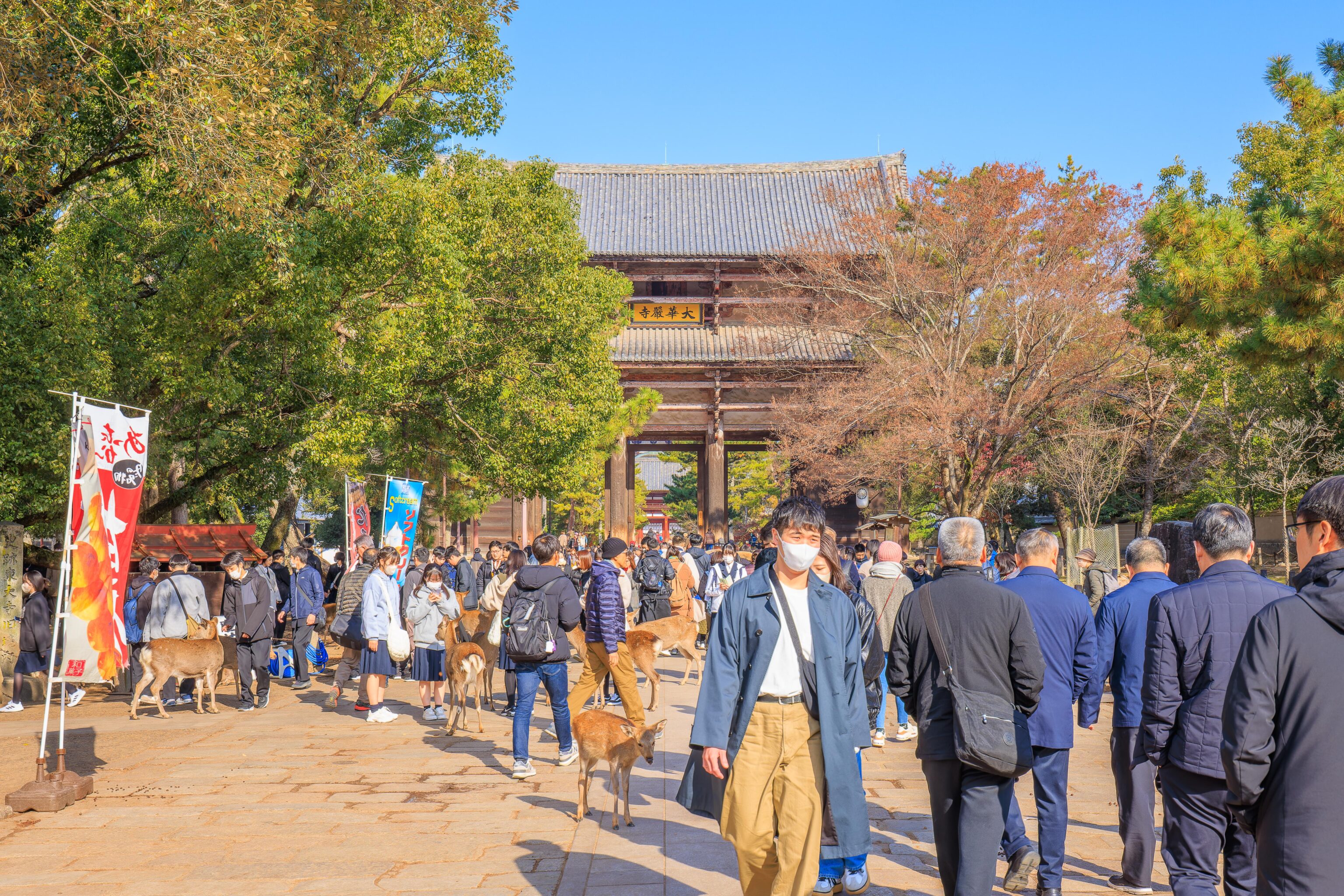
We could see Todai-ji‘s Namdaimon, the southern gate, in front of us. It dates back to 1203 so despite not being an original, it has been around for quite some time1!

There were a few deer resting nearby!

Soon, the gate was right in front of us.
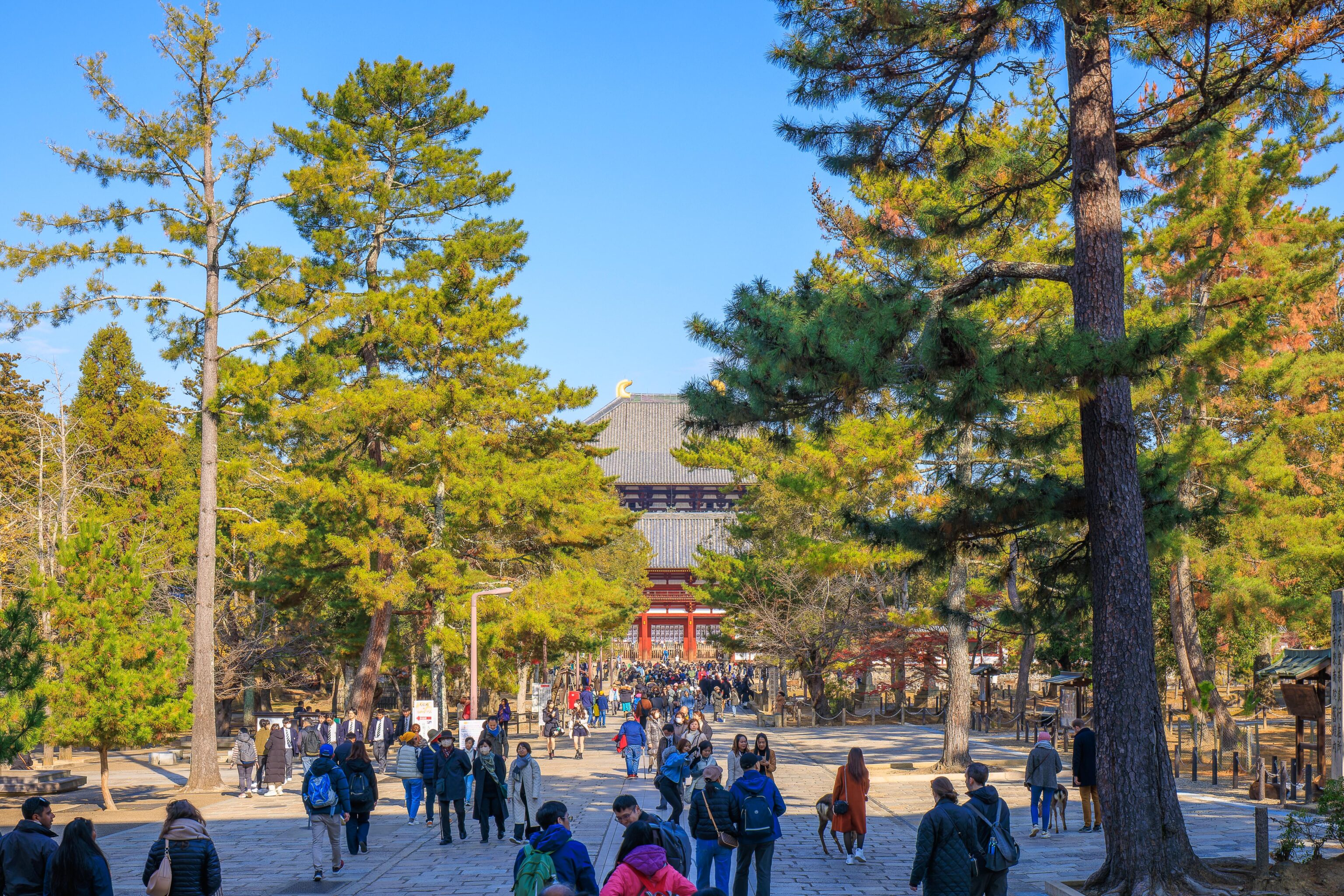
There was another gate, the Chumon, or central gate, beyond the southern gate. Its appearance is a bit confusing here as the upper roof is actually the huge Daibutsu-den, or Great Buddha Hall, beyond the gate.
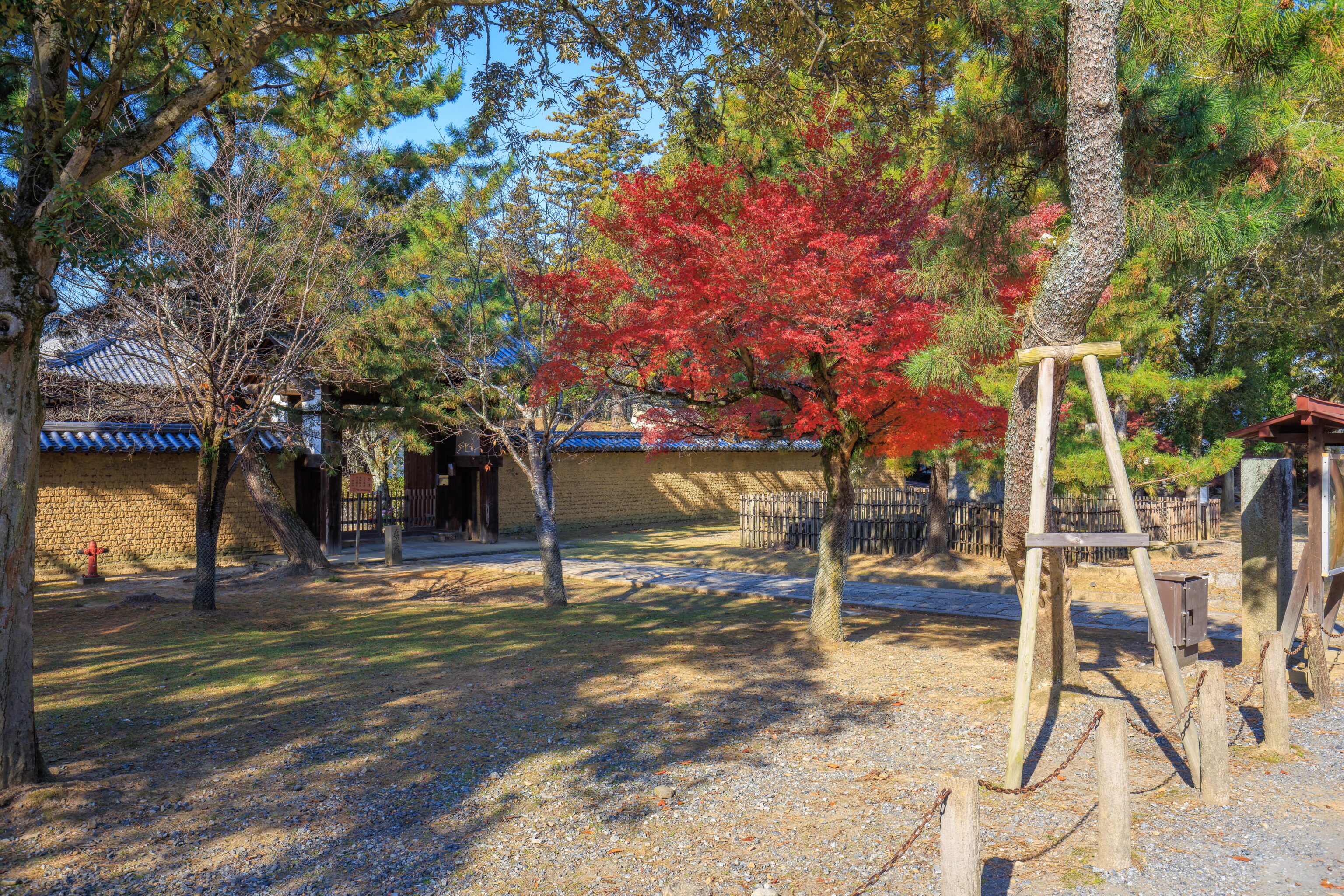
The trees were mostly green as there were quite a few pine trees. But, there were still Japanese maples in the area.

We walked by the Kagami-Ike, a pond.
Todai-ji
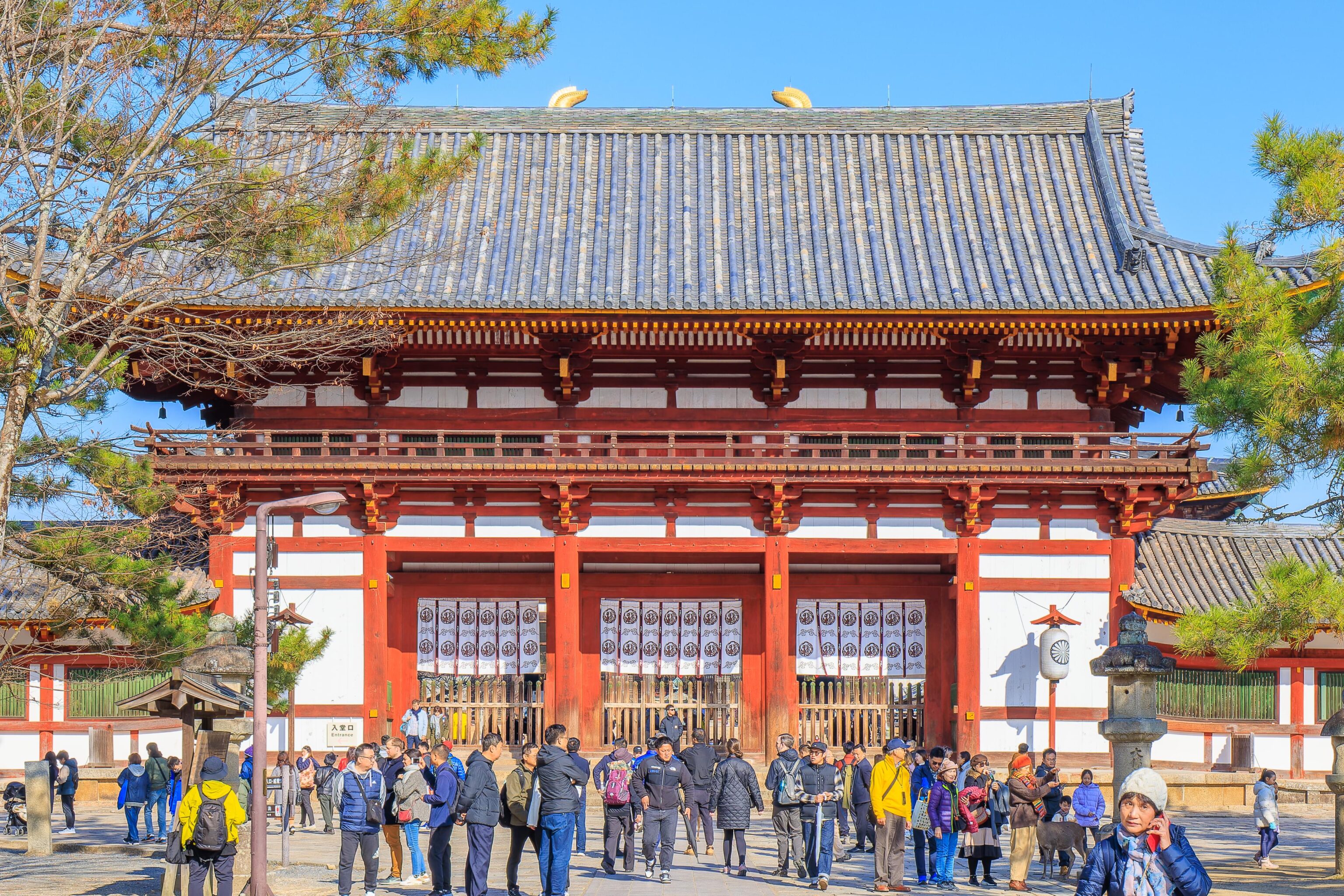
Soon, we reached the central gate. From here, the tips of the golden horns atop the Daibutsu-den are still visible. Although this is a gate, it is not open. The entrance and ticket office is to the left, or west.
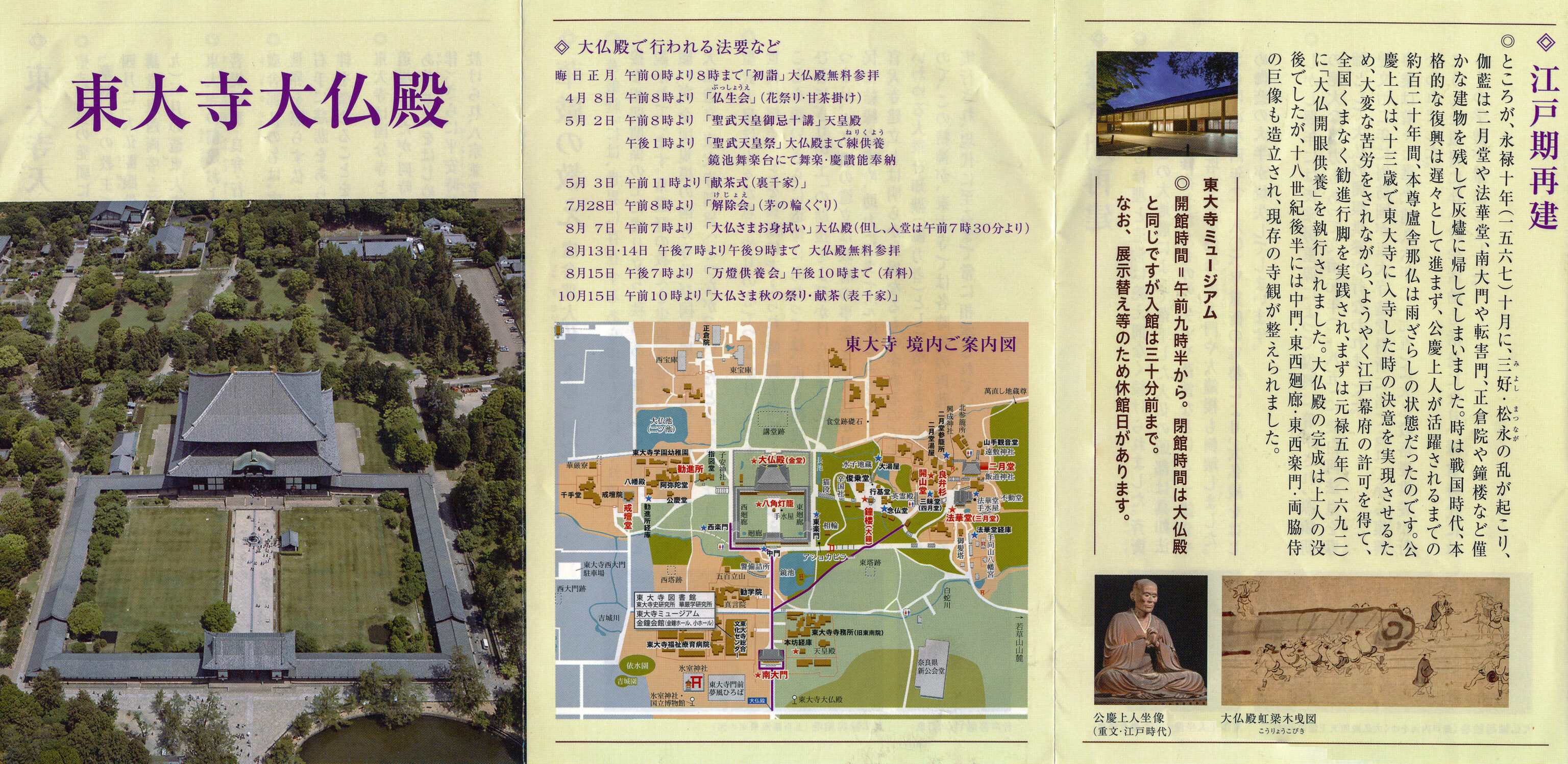
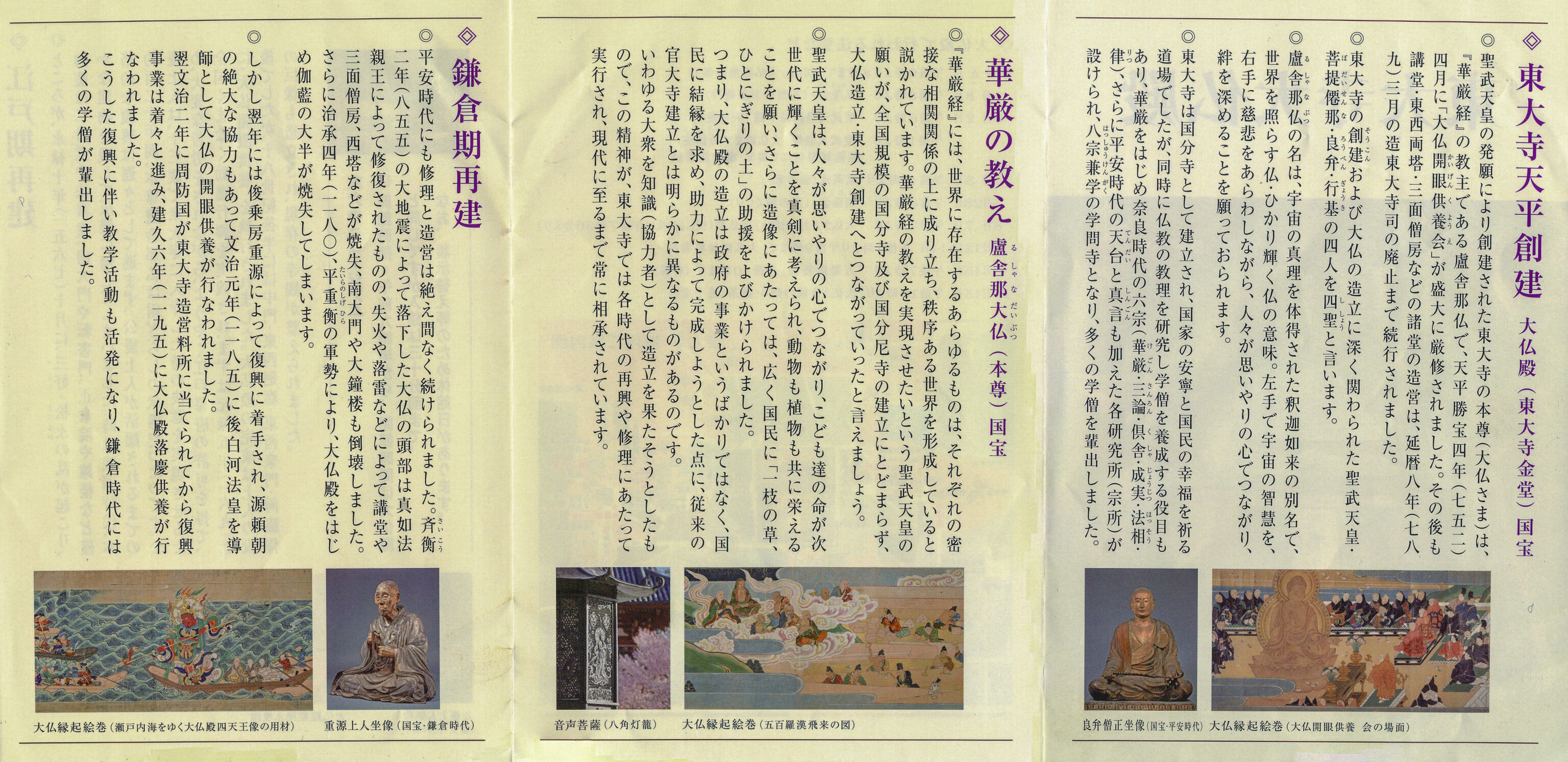
We received a Japanese language pamphlet.


The ticket had some statistics about the Daibutsu-den in English as well as an overview of the temple. The temple’s website does have an English language map on their downloads page though.


The Daibutsu-den is on the far side of a very large courtyard. The courtyard is surrounded by a wall and covered passageways. The ticket office exit is at the southwest corner of the courtyard. It is not possible to exit to covered passageway until reaching the central gate. From here, there is a wide path leading to the Daibutsu-den. The gate is behind us.
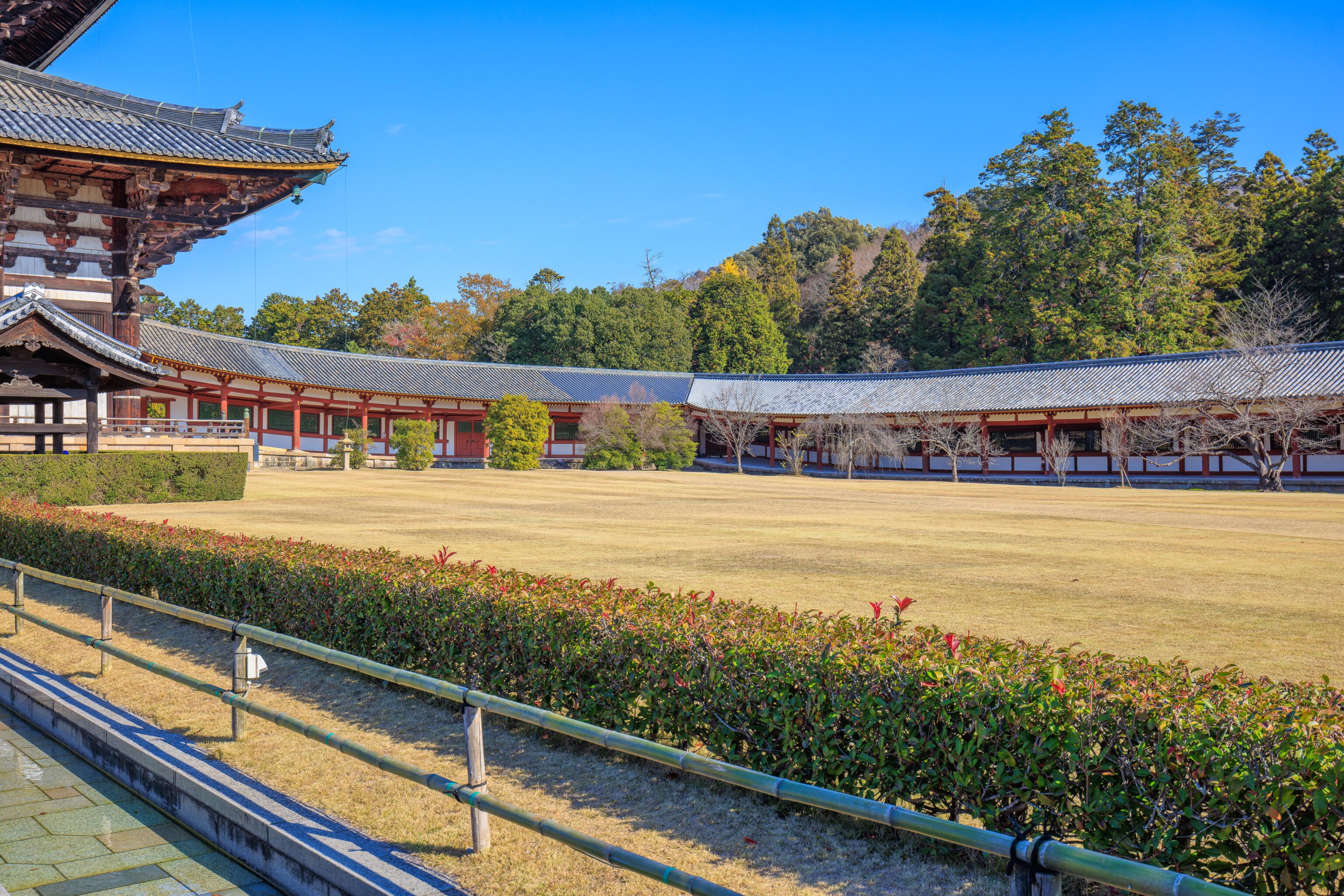
The courtyard is just grass, there isn’t much to see. There is a bit of shallow water on the side of the walkway though. We haven’t really seen this at any other temple.

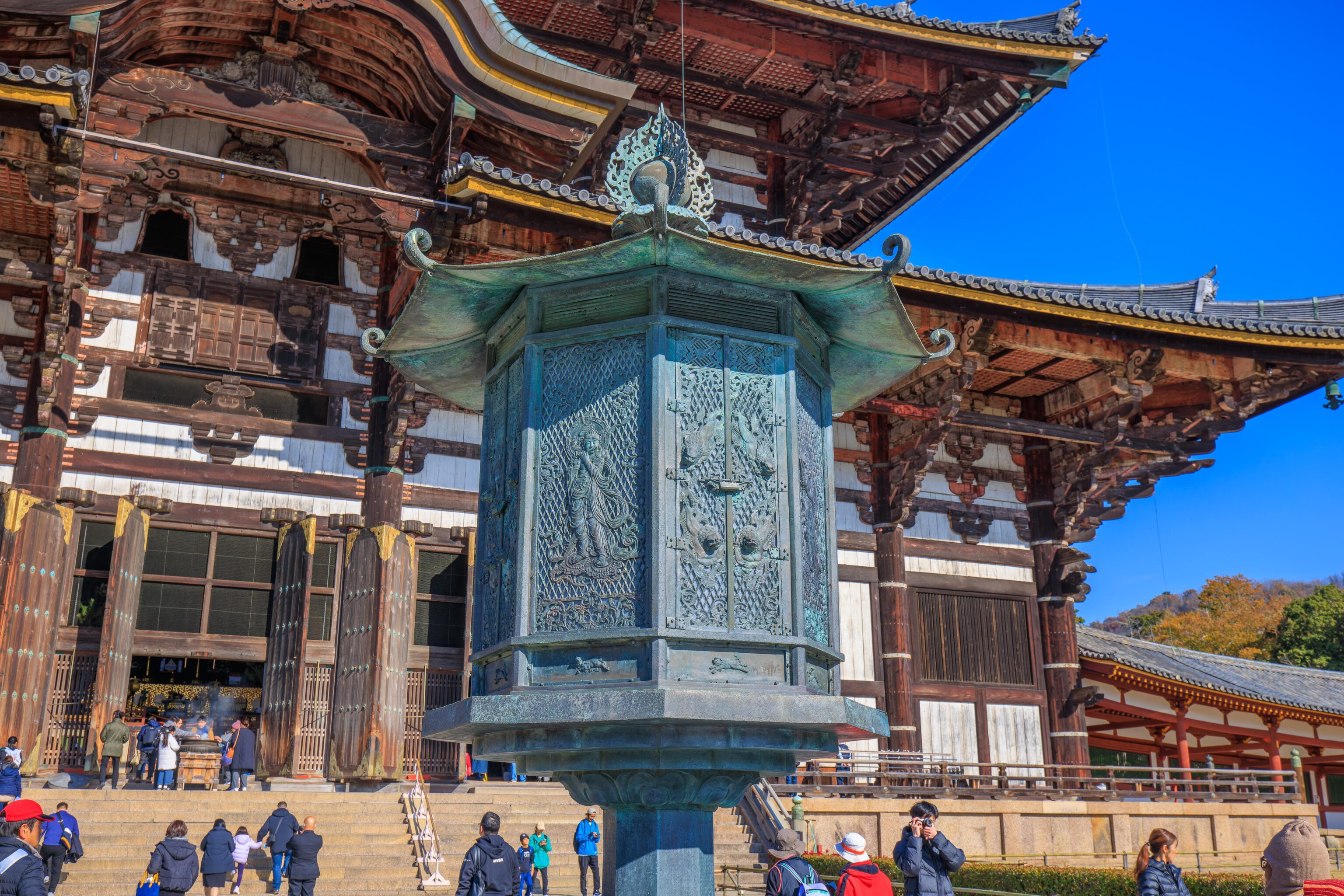
There is a large octagonal bronze lantern in front of the Daibutsu-den. It is described as being from the Nara period, making it 1200 or so years old2.

The hall gets its name from this Daibutsu statue. Specifically, it is the Vairocana Buddha.

There are various smaller statues in the hall. This one is the Kokuuzo Bosatsu, to the left, or west, of the Daibutsu.
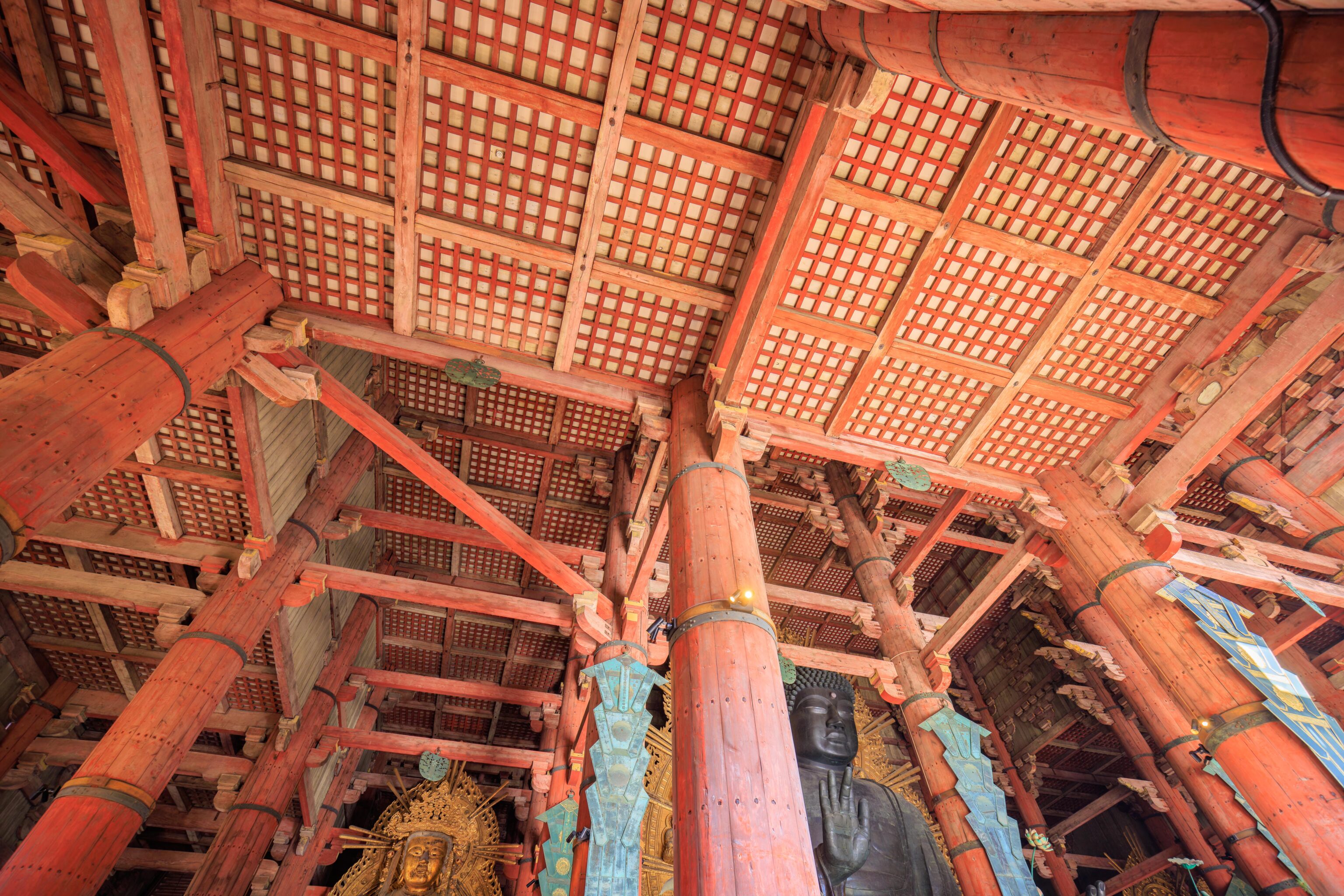
Looking up, showing some of the interlocking wooden structural elements. There aren’t really any designs carved into the wood but the way the various wood pieces are laid out presents an interesting structure to look at. It is all very detailed without the individual pieces having any detail.

The Daibutsu from the side. The huge doors in front of the building were open so the lighting varied as the clouds floated by.

The Kokuuzo Bosatsu from the side.

This statue, on the west side of the hall, is Koumoku-ten. He is one of the Four Heavenly Kings. There is one of each of the cardinal directions, he is of the west.

This is the head of Zojoten, the king of the south. A sign nearby indicates that it is from the 18th century. Unfortunately, Google Translate doesn’t work well on the Japanese text on the sign. It seems to say something like this:
The last remaining statue of the Buddhas in the Great Buddha Hall was restored. The statues of the Four Heavenly Kings are from Kansei 11 (1799). Koumoku-ten's Misogi blessings were performed, and it was later completed along with the Tamon-ten statue. Only the bare wooden heads of the two heavens of Zojo-ten and Jikoku-ten remained.
It seems to say that of the four kings, two of the statues were completed and the other two were not.

We continued on to the back side of the Daibutsu.
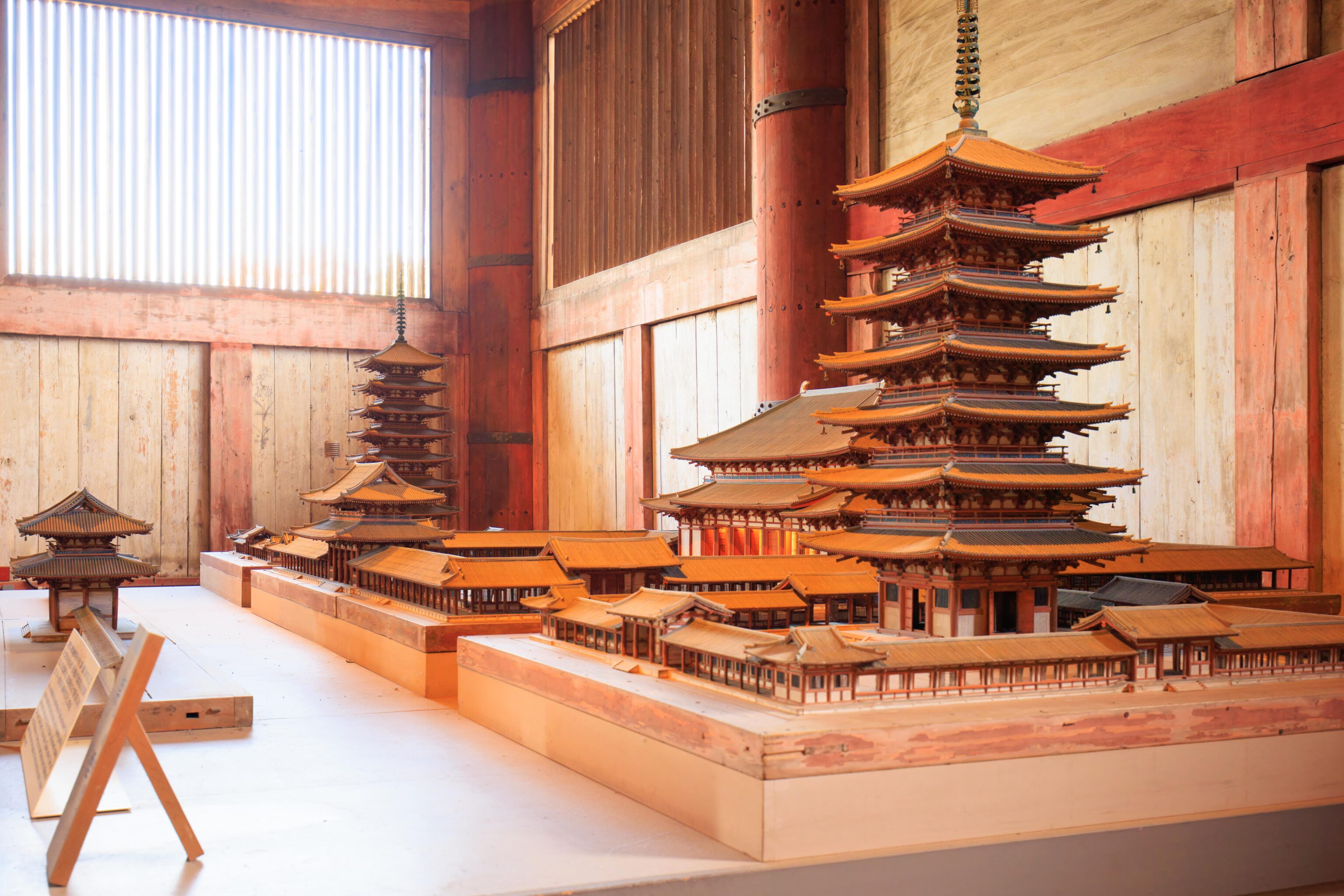
There was a model showing how the site appeared historically. The Daibutsu-den that is here today was built in the 1700s and is smaller than the previous structure, from the 8th century, due to insufficient funding3. There were other buildings as well such as the large pagodas flanking the hall.

The king of the north, Tamon-ten.


This is the Nyoirin Kannon, one of the forms of Kannon, known as Guanyin in Chinese, the Bodhisattva of compassion. The beam of blue light that shines at Kiyomizu-dera during the special night viewing, which we saw earlier on this trip, is supposed to represent Kannon’s compassion.

We had exited but quickly returned to get a view of the Daibutsu from directly in front.
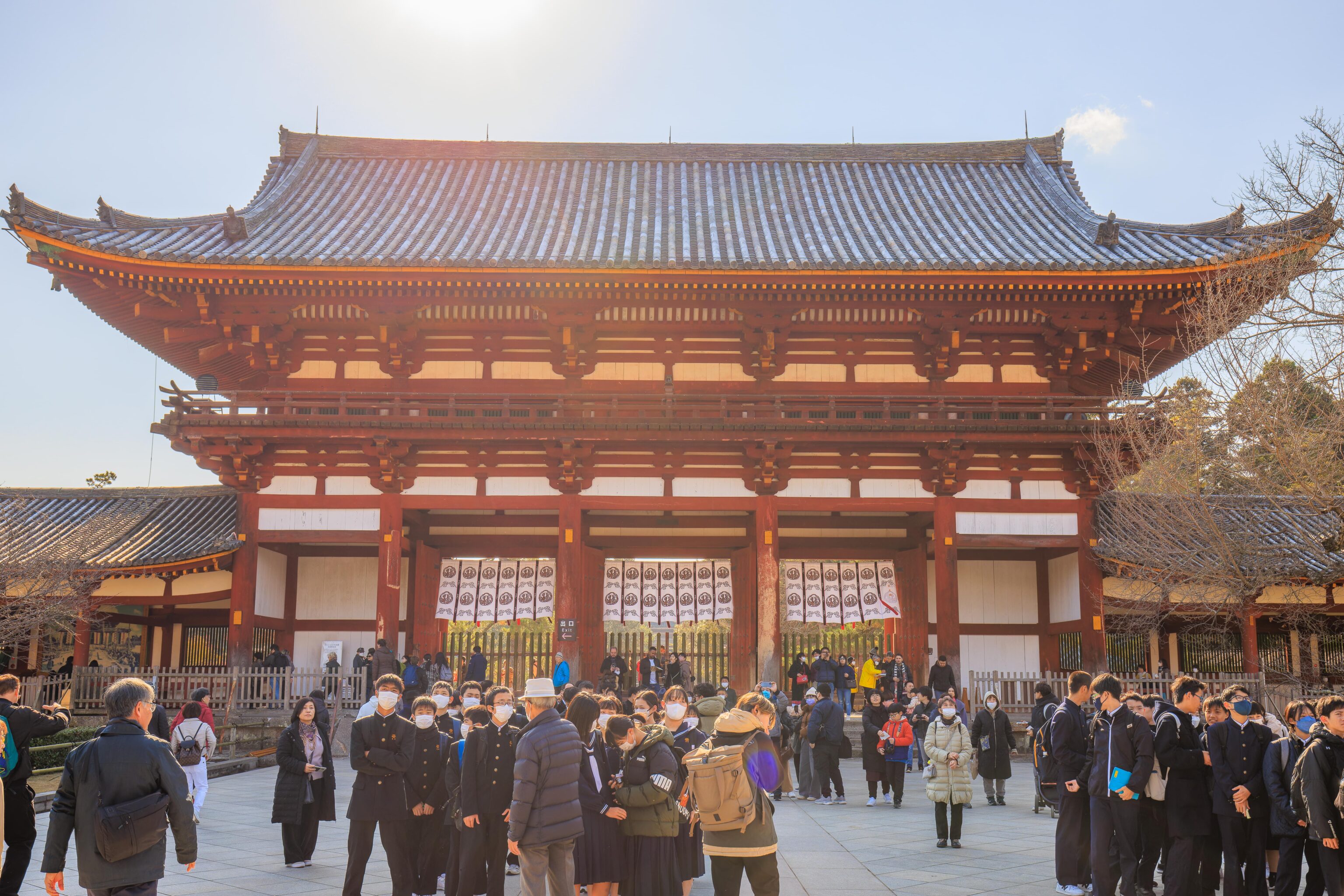
It was pretty busy near the central gate after walking across the courtyard. Various school groups had just arrived.

The exit is at the southeastern corner of the courtyard. Looking to the north, we saw a spherical sculpture. We haven’t been able to find out details about this sphere.
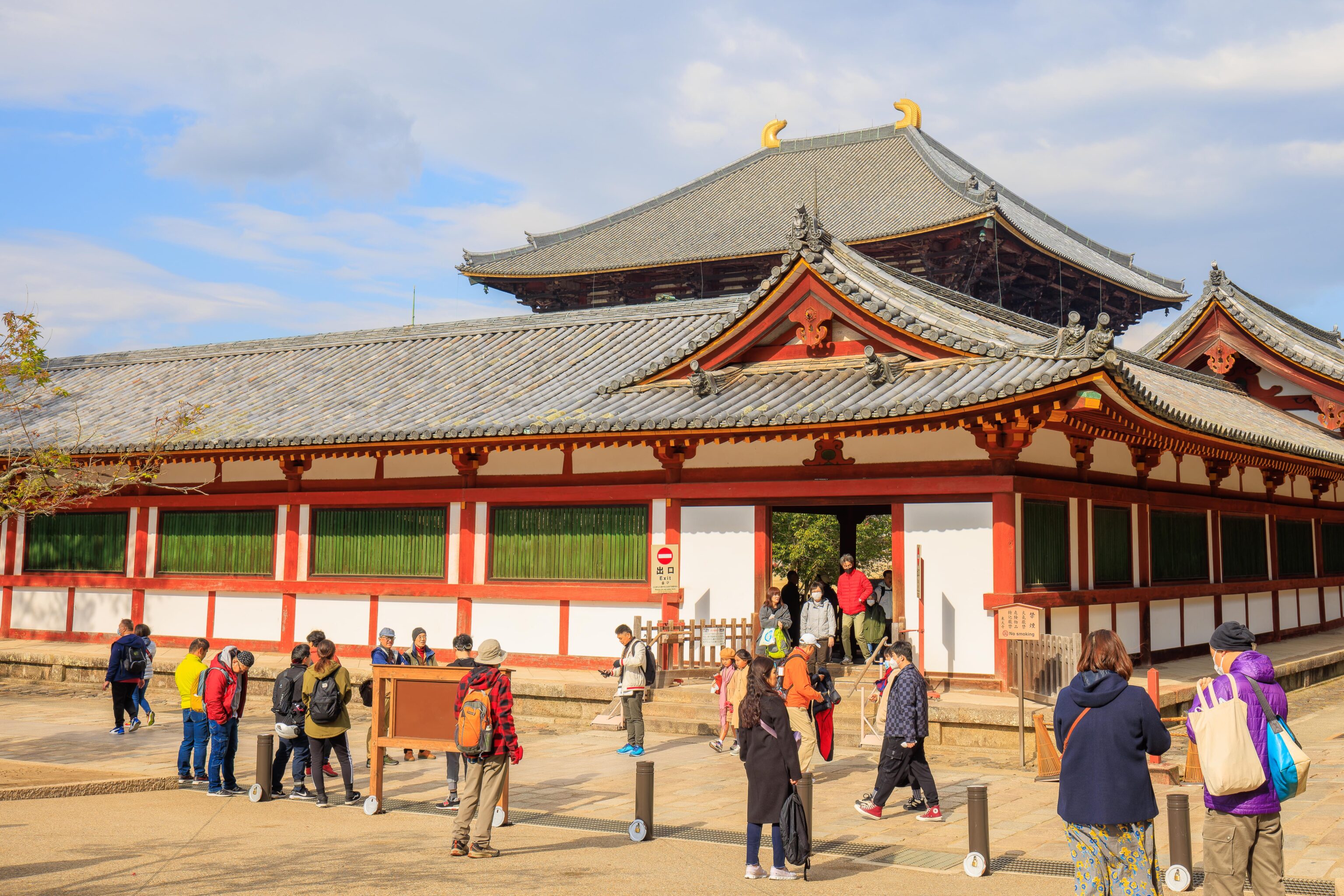
It wasn’t too busy at the exit compared to around the Daibutsu-den.

We spotted this sorin to the east of the exit. These structures typically sit at the top of pagodas. This one is a replica and was created for the 1970 World Exposition in Osaka. It was originally placed atop a replica of one of Todai-ji’s original seven story pagodas. Presumably, it looks just like the one in the model that we saw inside of the Daibutsu-den4.
Lunch
We decided to get lunch as it was nearly 11:30am. There was a small cluster of shops and restaurants nearby to the northeast. We headed in that direction.

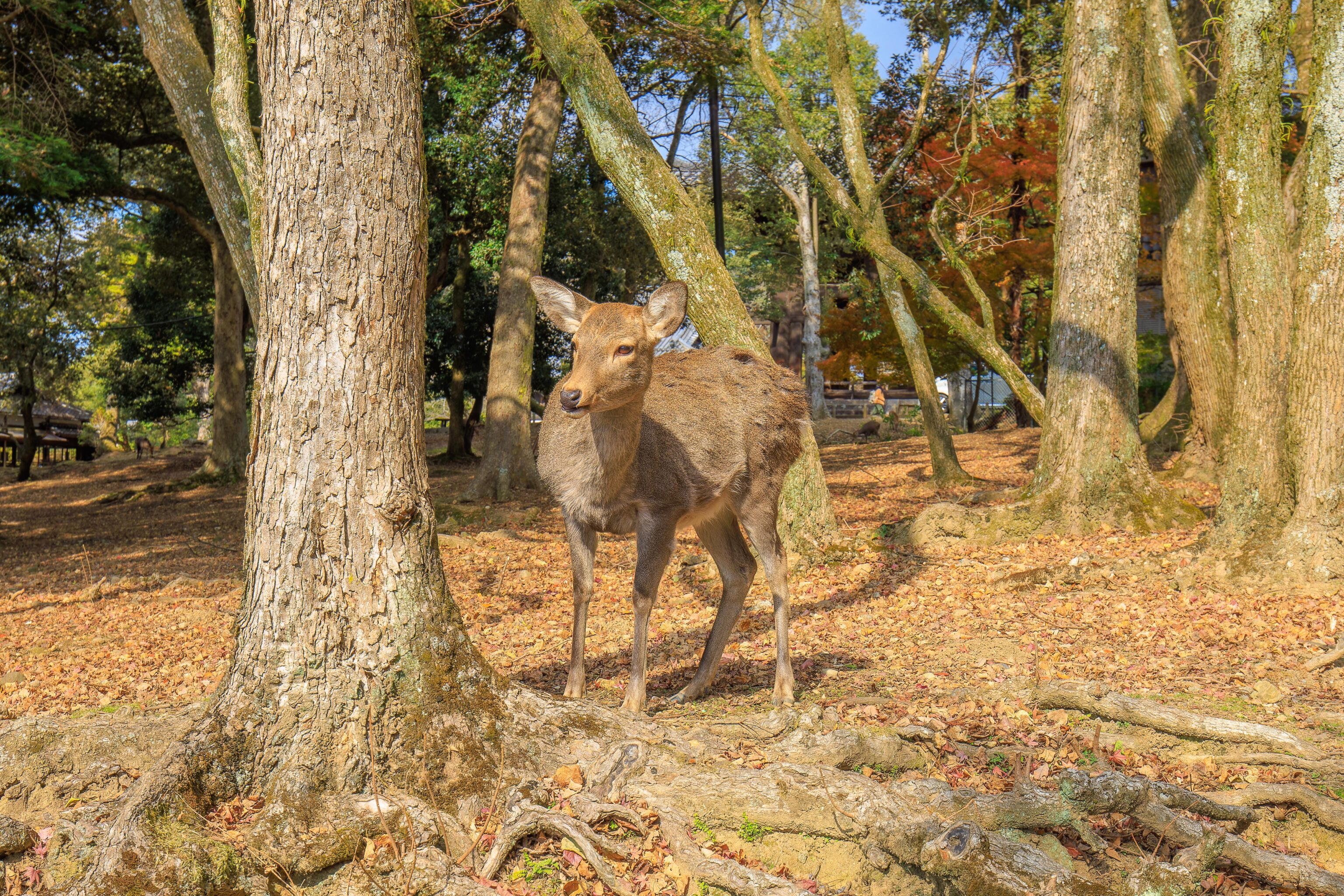
We walked through a small lightly wooded area to get there. Of course, there were deer.


We decided to eat at あぜくらや (Azekuraya). We ordered two bowls of udon, one thick and the other thin.

We also had a small desert, warabimochi. Everything we had was good!
Nigatsudo
After lunch, we walked to the northeast, headed to the 二月堂 Nigatsudo (February Hall). This hall is a part of Todai-ji’s vast temple grounds. Although this building is a reconstruction, it is from the 17th century so it isn’t exactly new!

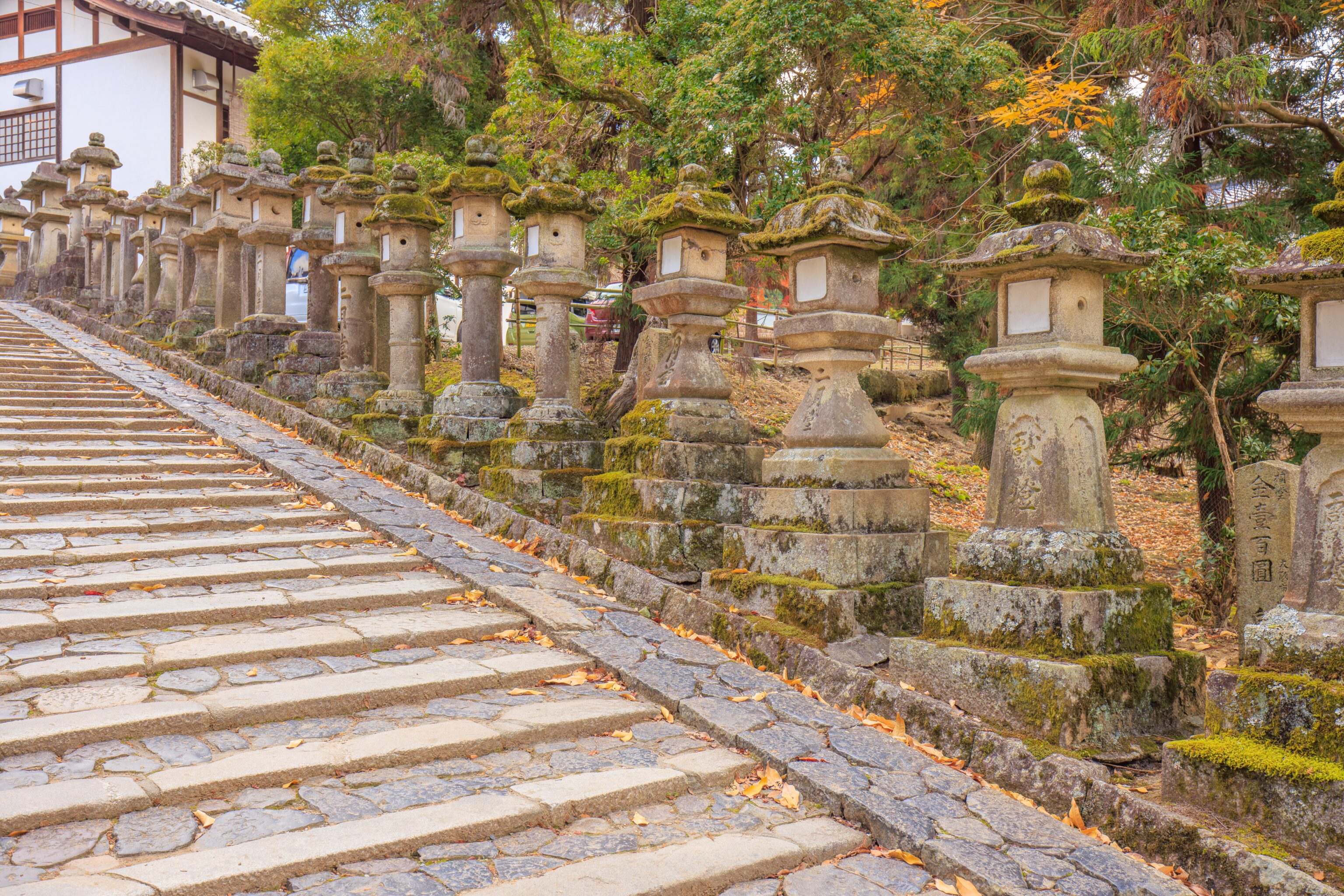
There are some stairs on the way, though these weren’t very steep at all. The ground was sloped as well, making the stairs not particularly useful!

The view from the top of the stairs and slope.

There is our destination, the Nigatsudo, in front of us!

A cleansing station with dragon water spout, though more water seems to be coming out of the two adjacent bamboo spouts!
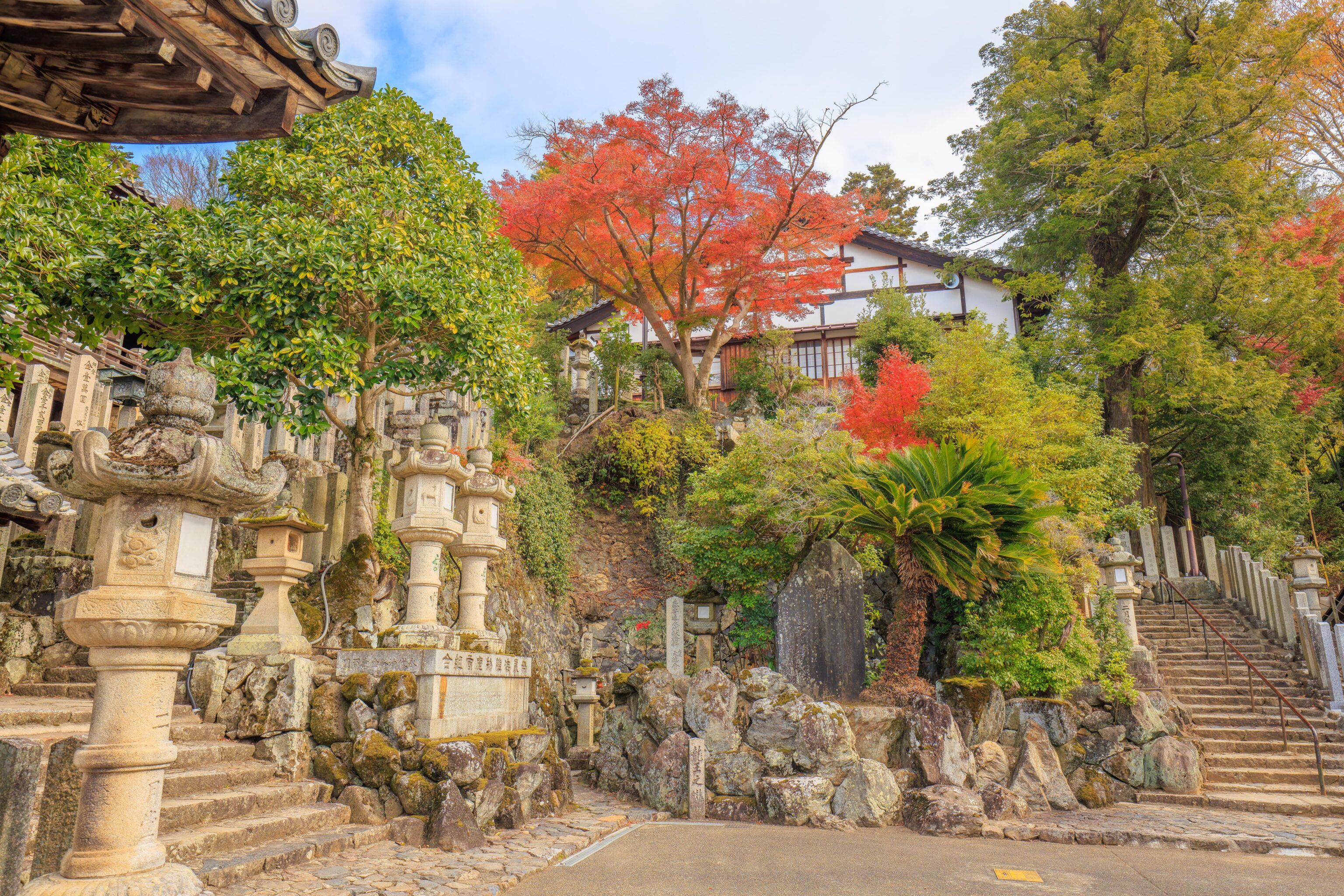
A little bit of fall color, in case you forgot what season it is!

Although the slope we ascended didn’t go up very high, we were still above most of Nara to the west. Not high enough to see much other than trees though.

There are some real stairs to climb to get to the hall!

The view from the top of the stairs!

Our first close look at the hall.
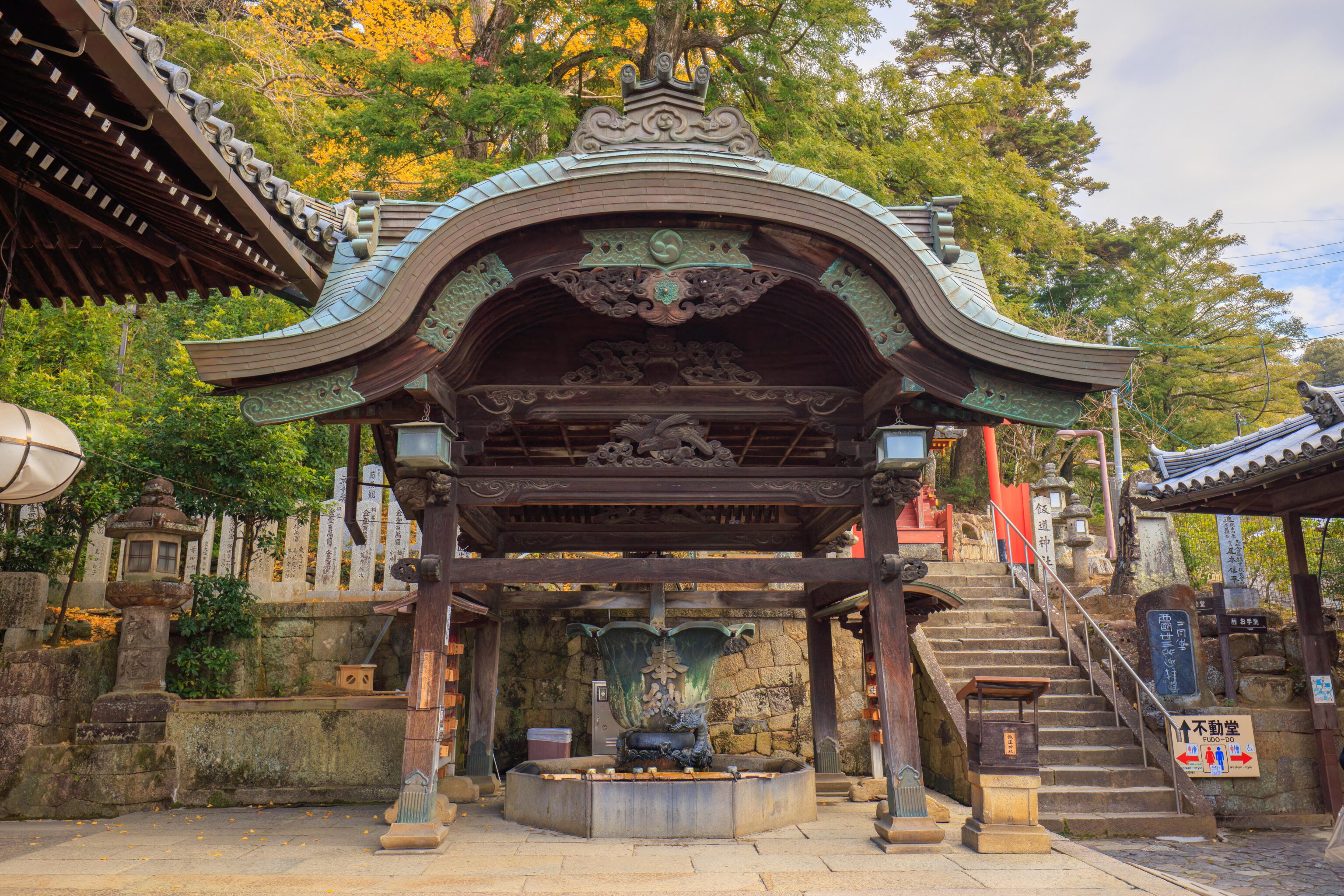
There is another cleansing station here. The structure above seems to resemble the imperial messenger gate that we often see at various temples.
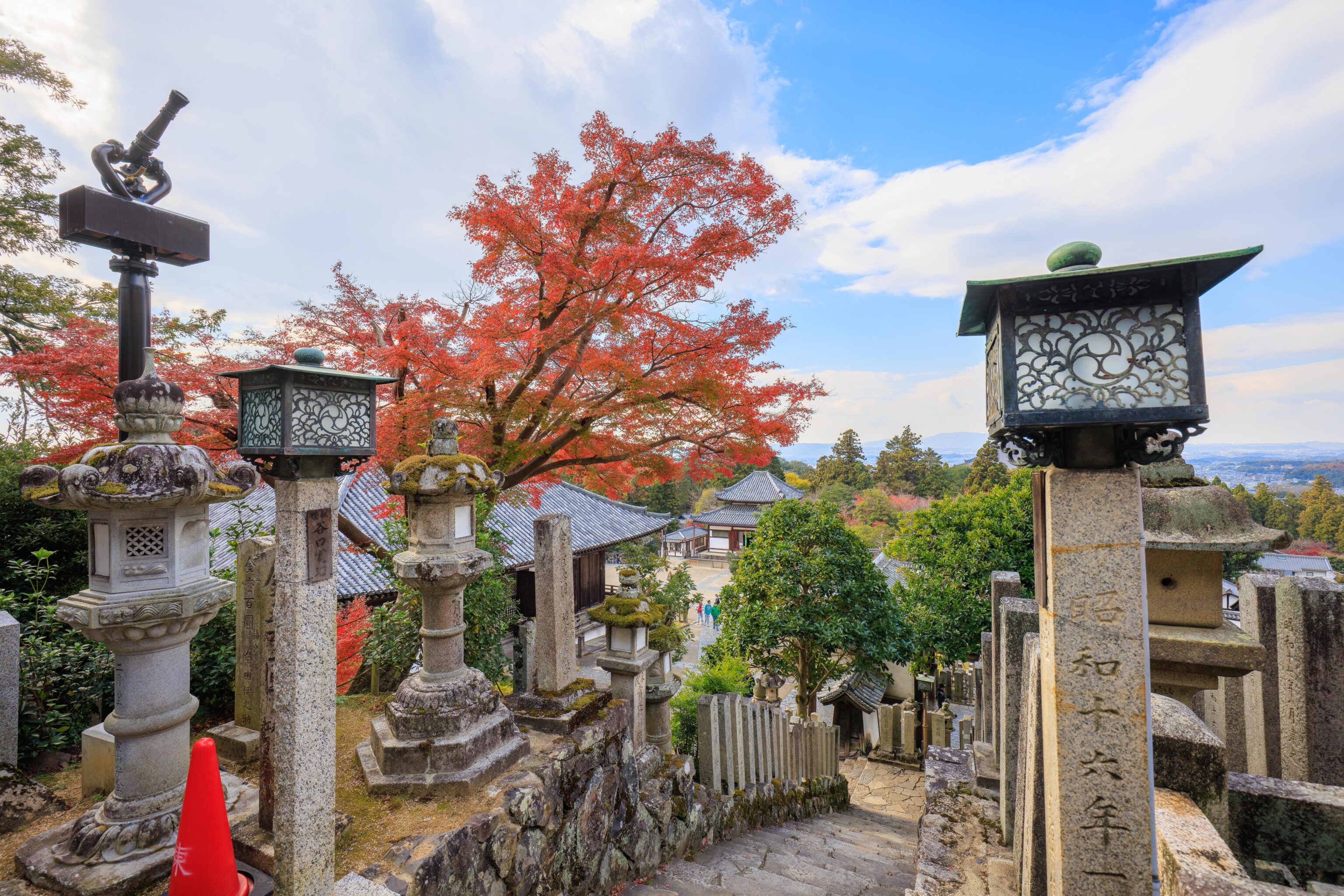
We noticed a different, steeper path down. We also noticed the water gun on the left. This seems to be here in case the temple catches fire!
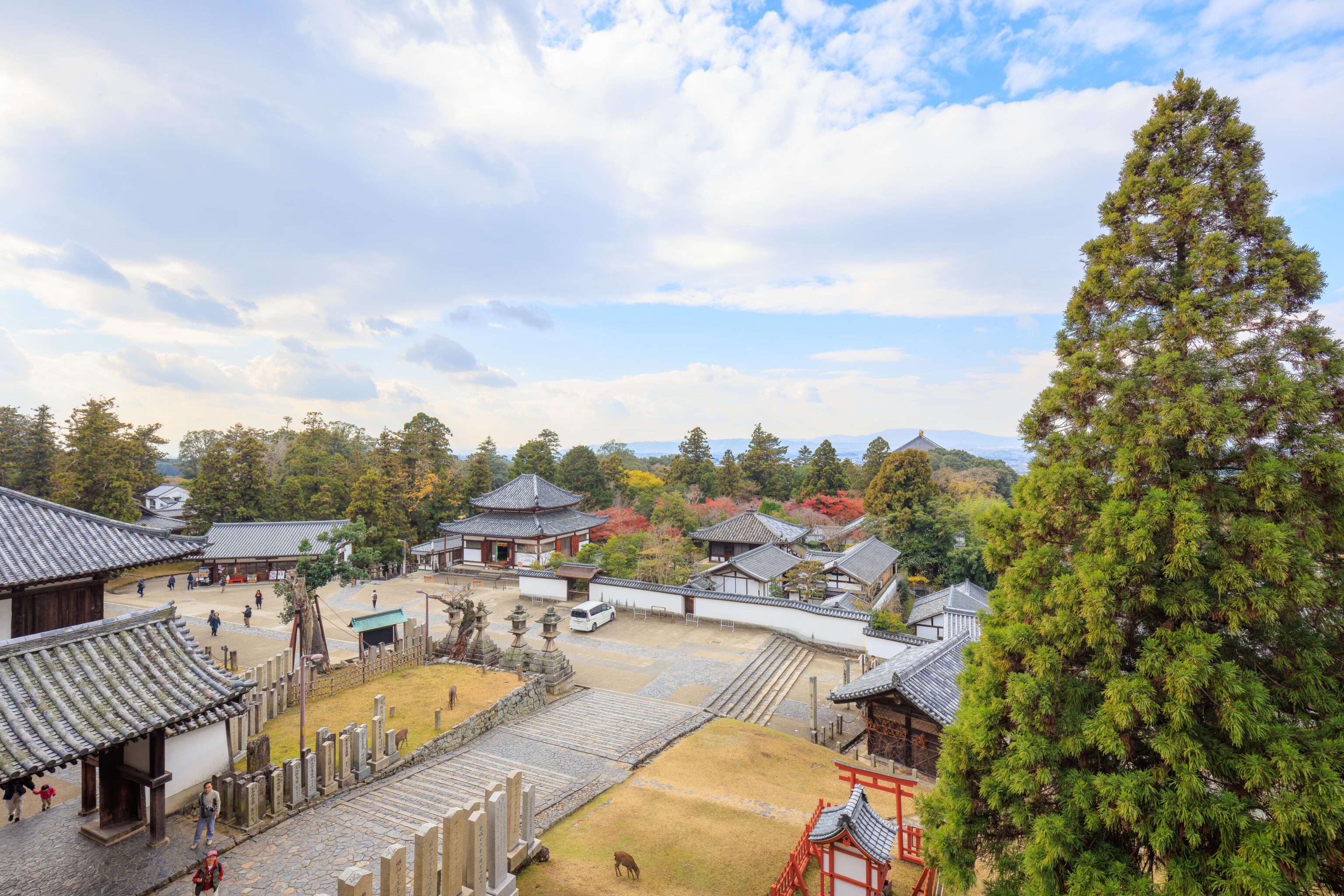
Although the hall is once again higher than where we were at previously, it still isn’t high enough to have much of a view over the trees! And, we still are not above the Daibutsu-den’s golden horns.
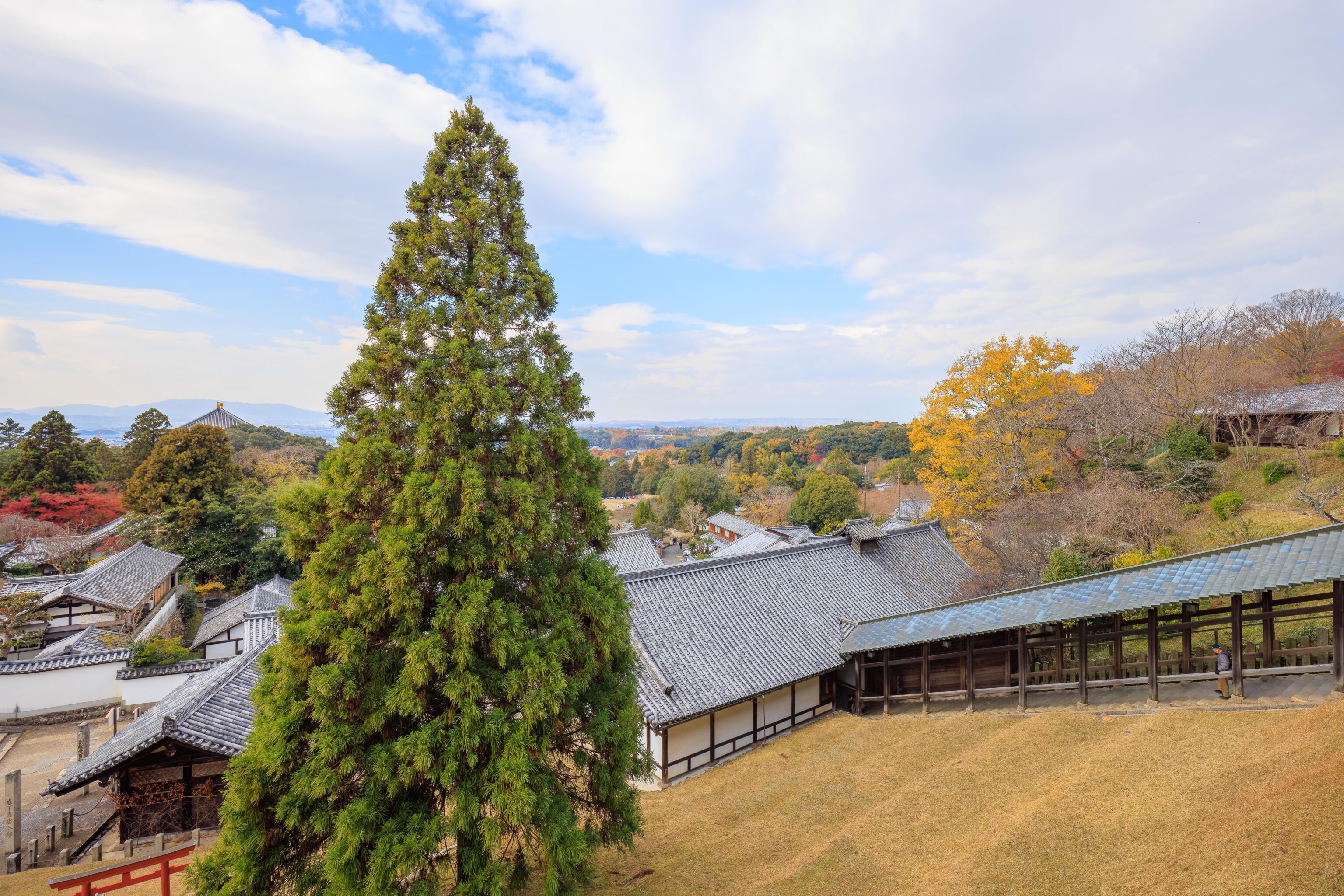

A covered stairway was on the side of the hill, just to the north of the hall.

Some additional temple art.

We passed by another cleansing station as we walked to the north beyond the hall.

There is another temple building just to the north that serves as a rest area. It has lots of artwork as well. There were also works depicting the animals of the zodiac. Apparently, the Japanese zodiac is slightly different from the Chinese as a sheep replaces the goat and a wild boar replaces the pig. For some reason, there is a tile mosaic showing a woman in the monkey slot.
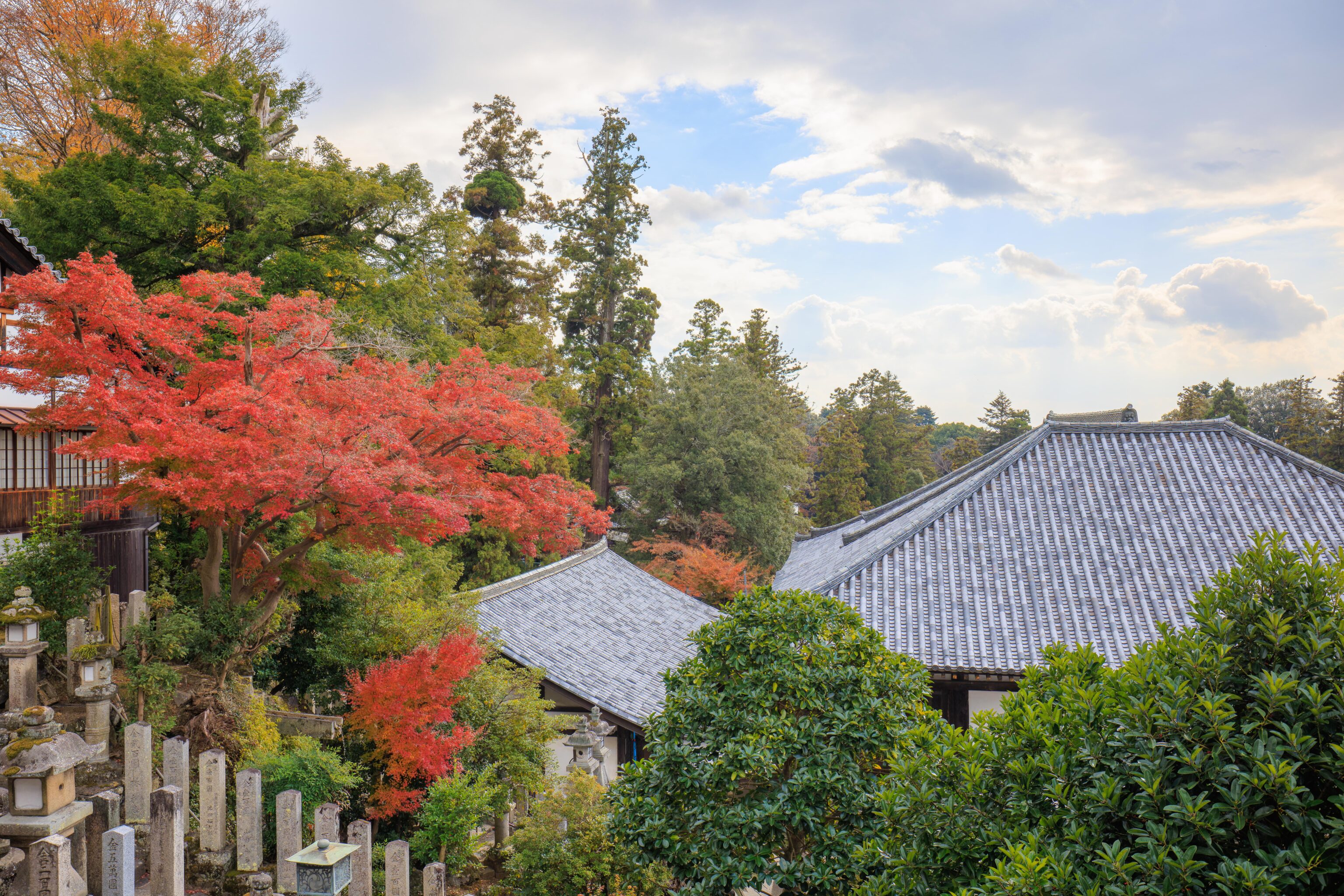
We headed back to the hall to descend via the steeper stairs that we saw earlier as they seemed to take us to the south.

We spotted a yellow ginkgo tree, adding a bit of color to the landscape. There weren’t very many of them here in the area.
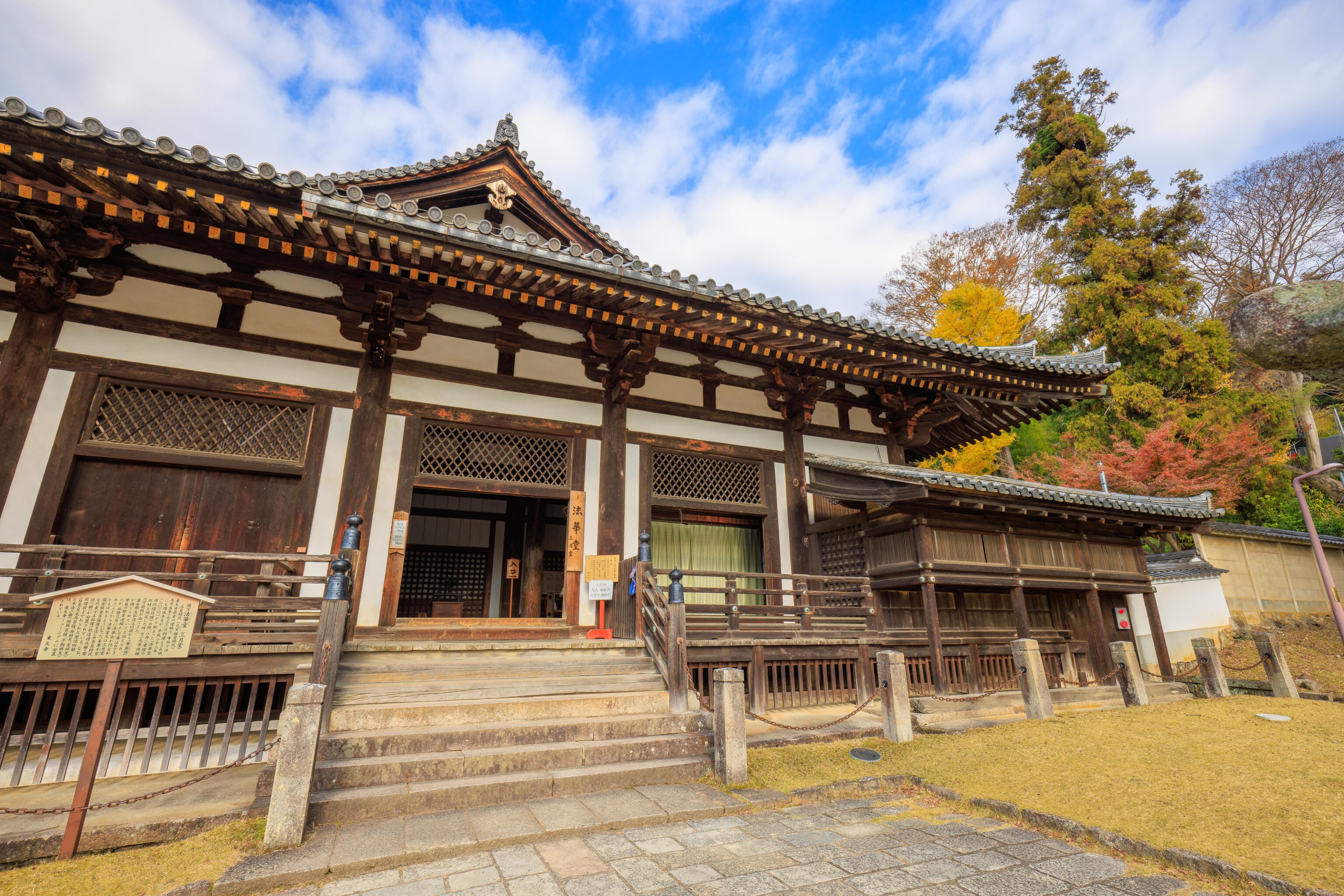

We passed by the 三月堂 Sangatsudo (March Hall). Part of this building is the oldest structure remaining in Todai-ji, nearly 1,300 years old!
Nara Park



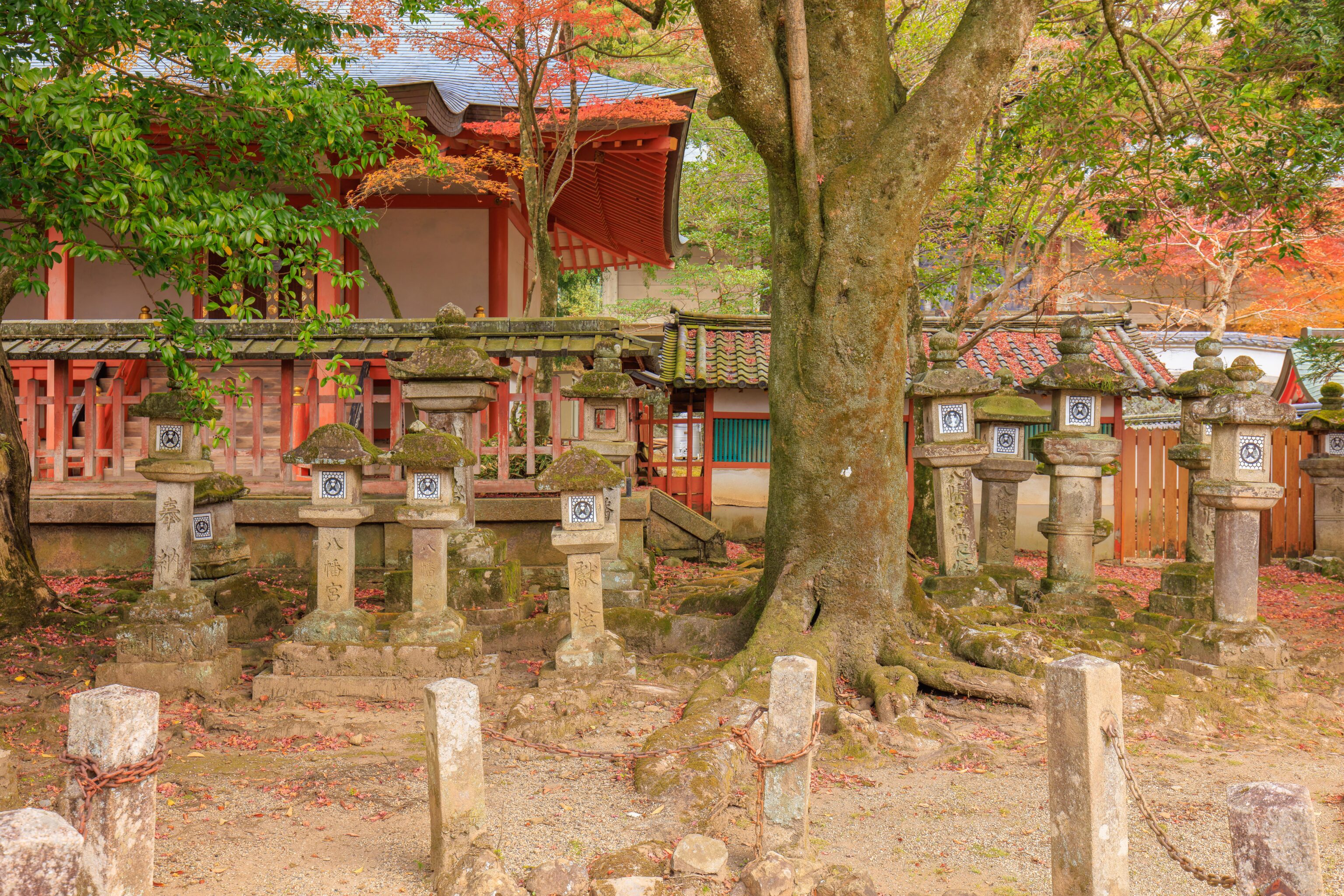
We left Todai-ji’s grounds and passed through 手向山八幡宮 Tamukeyama Hachimangu, a Shinto shrine.

We passed by a little bit of fall foliage as we continued to the south.

We reached a road that was pretty busy with people walking by. One side was lined with restaurants and shops while the other was open space. Of course, there were deer. Nara deer aren’t particularly big, not like the Elk we have in the US. But this one looked pretty big as far as Nara deer go!

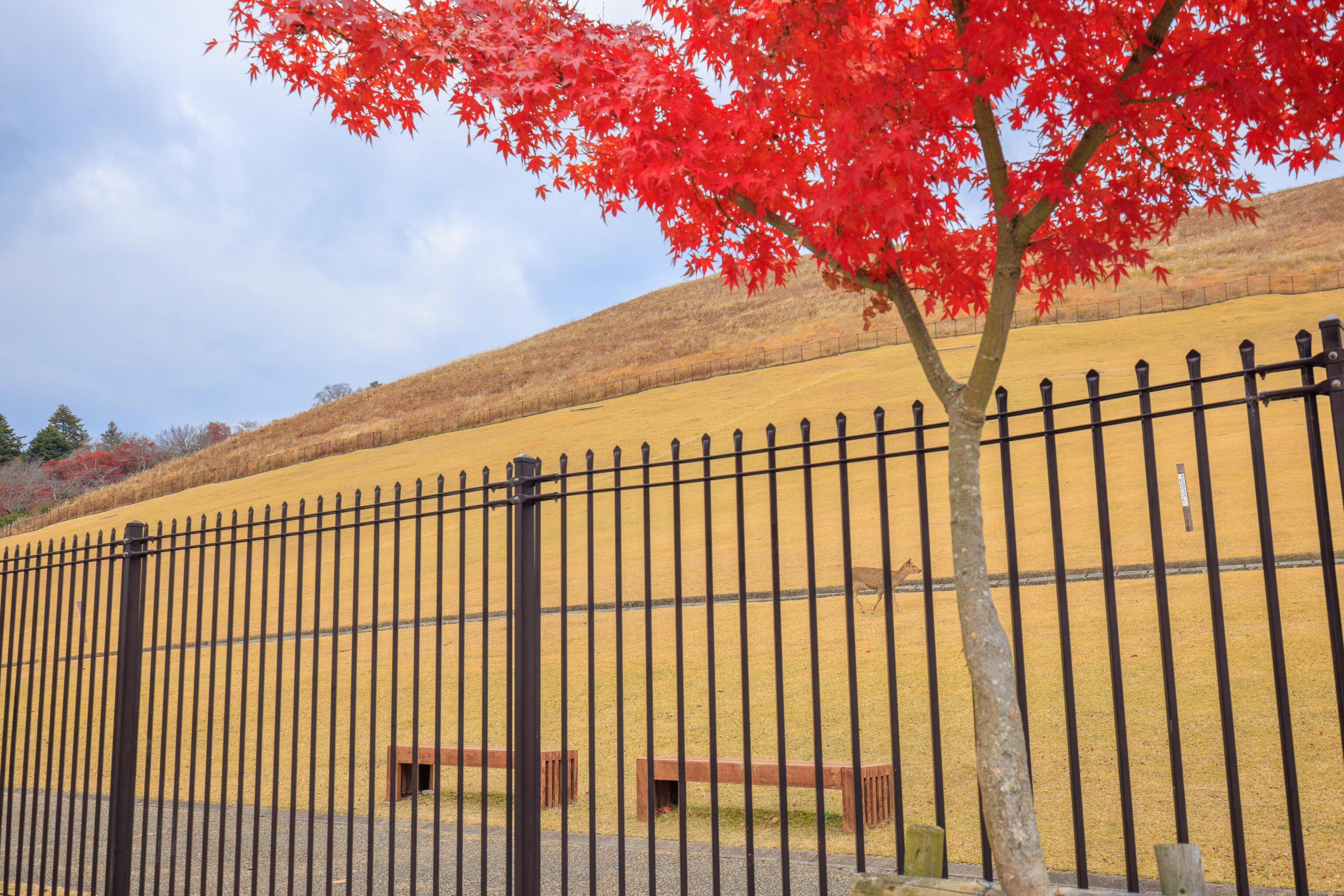

There was a fenced off hill to the northeast, not far from the road. The hill is Mount Wakakusa. There is a fee to enter, though its not clear why given that the rest of the huge park is free to enter.



We continued walking to the south along a path right next to the fence.
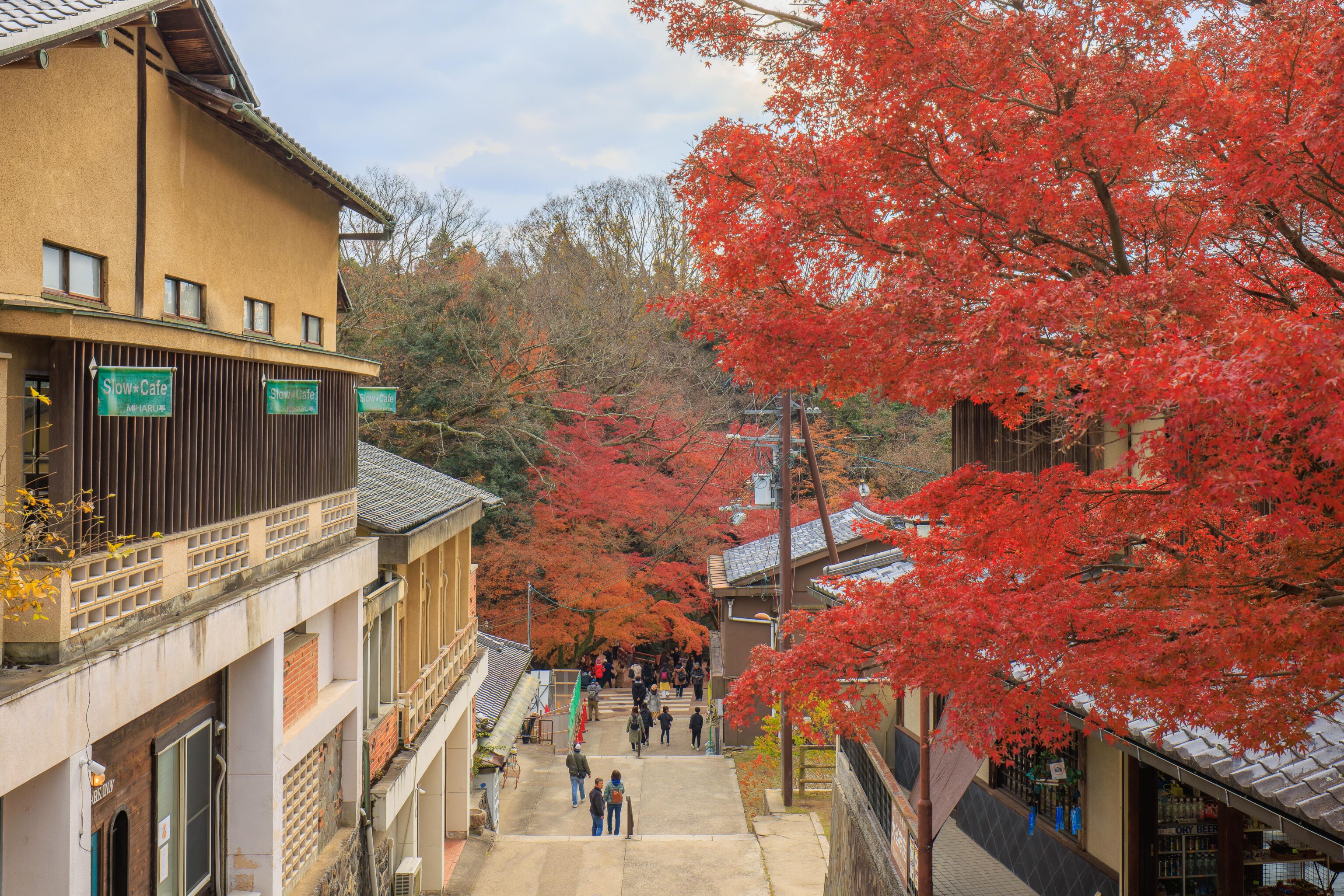
Soon, we reached the end of this area and descended some stairs to continue on.


We saw some beautiful fall foliage as the path crossed a small road! Many people were enjoying this area of the park!
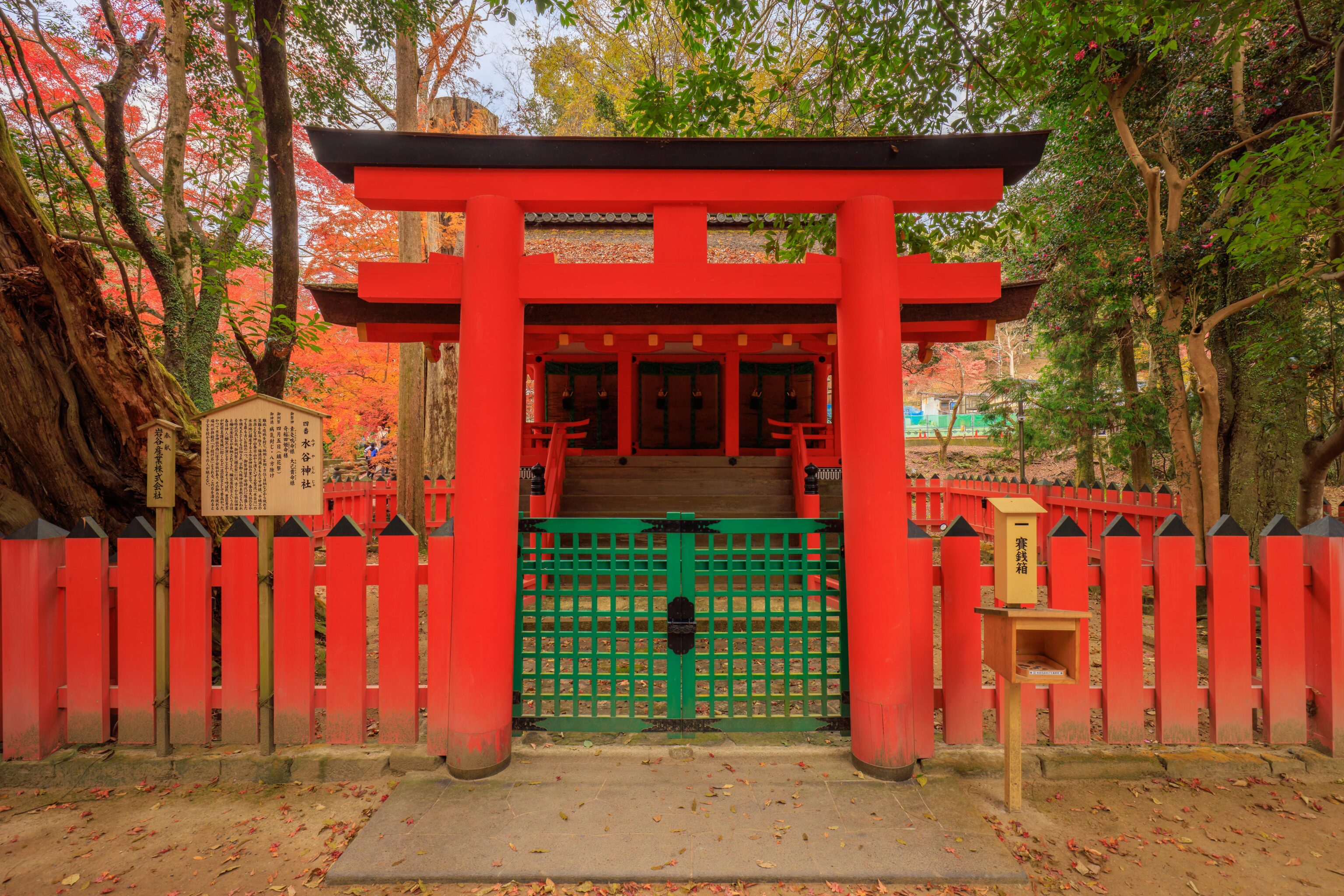
We passed a small Shinto shrine.
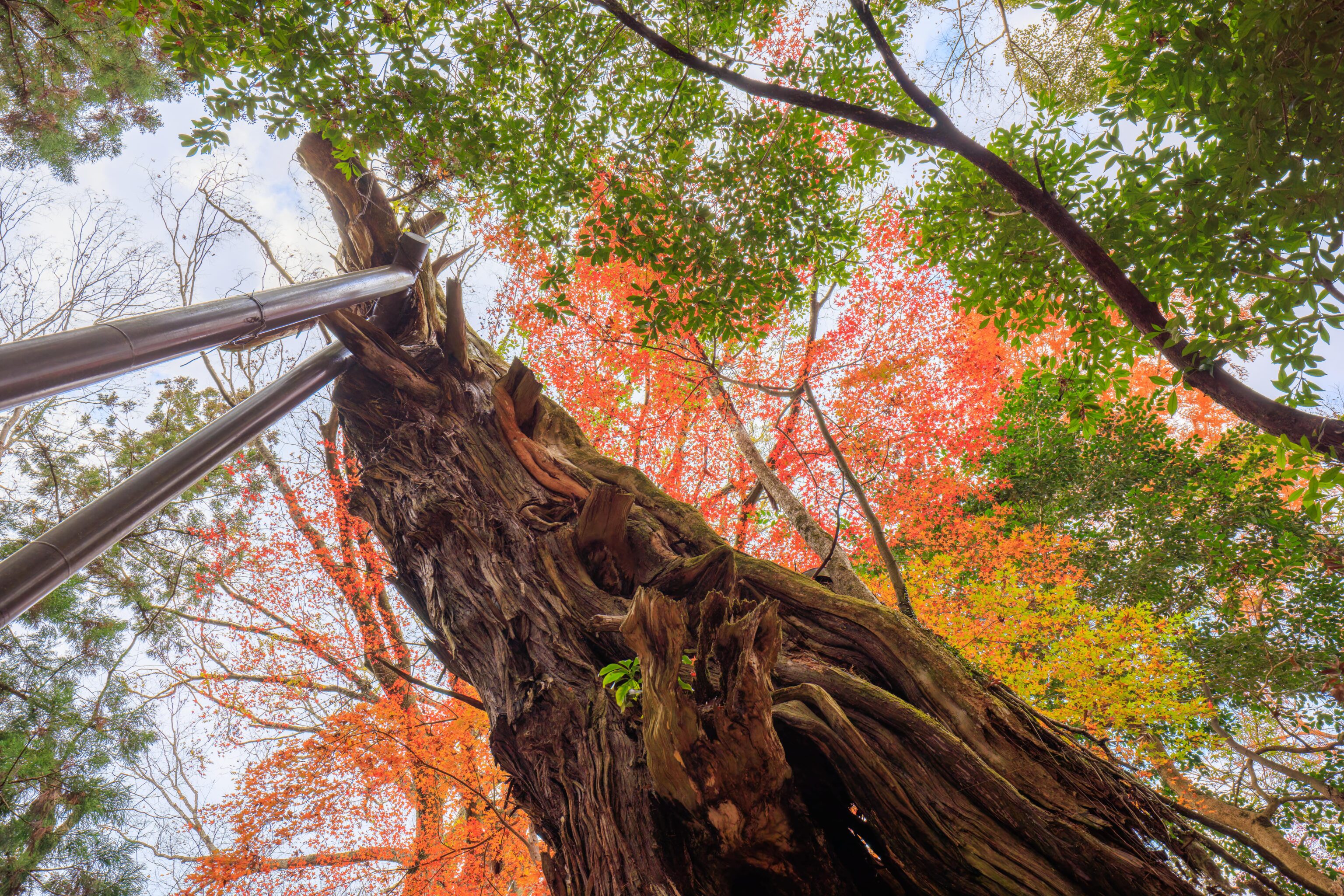
This tree, a Chinese Juniper, is special. A sign reads:
Ibuki (Juniperus chinensis) Hight: 12.5m, Circumference: 6.55m Gigantic Chinese juniper stretching down from Mizuya-jinja has air hole in its stump where a Japanese cedar is growing, so that they look like Chinese juniper holding a big Japanese cedar. This weird relationship of Chinese juniper and a Japanese cedar is known as "Mizuya-jinja-no-yadorigi."
It is, unfortunately, a bit hard to tell what is going on from this perspective!
Kasuga Taisha

We’ve reached our next destination, the World Heritage listed Shinto shrine 春日大社 Kasuga Taisha, part of the Historic Monuments of Ancient Nara.

We watched as a small Shinto procession formed up and passed by.




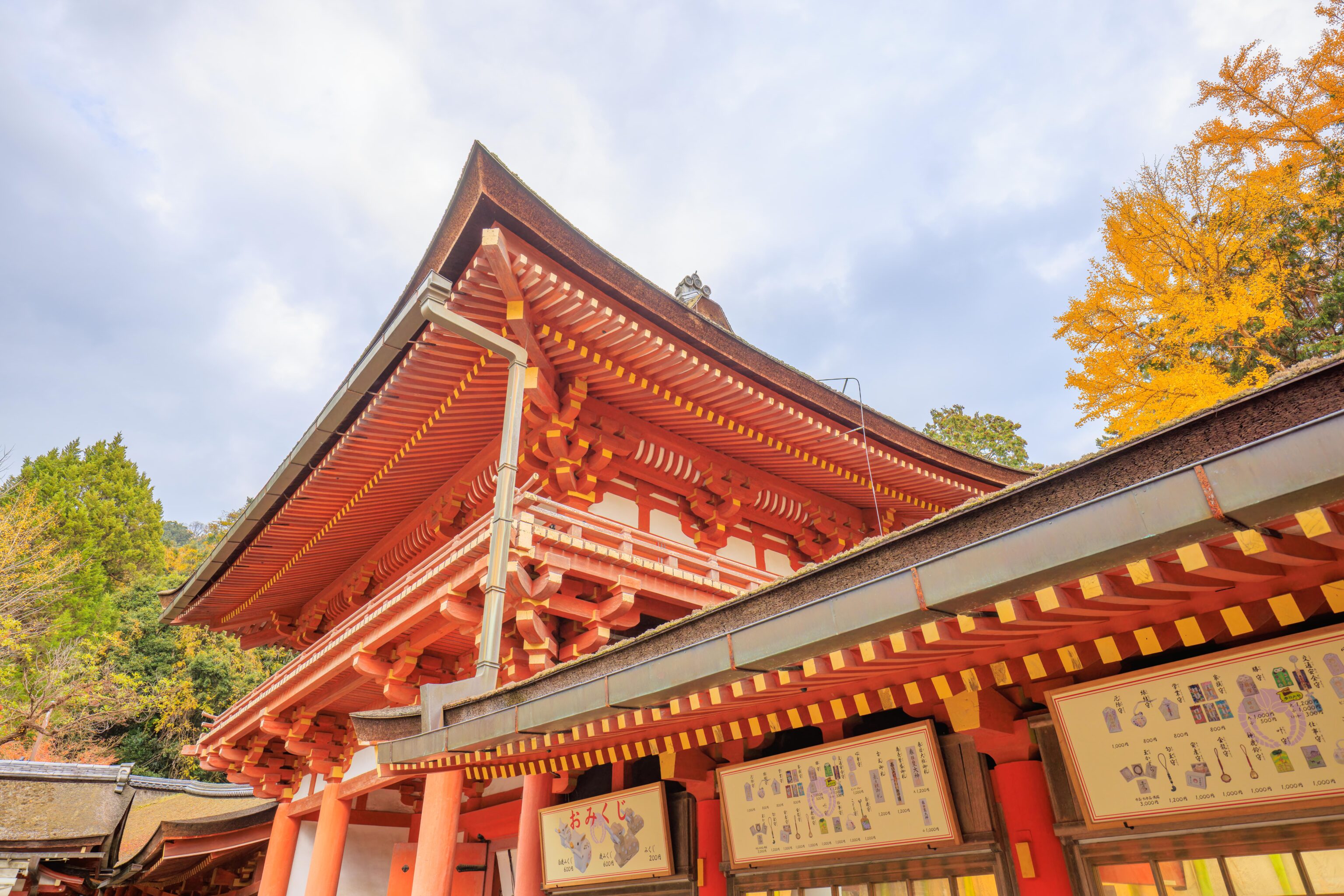
We continued on to enter the central area of the shrine. There is a tour route that goes further into the shrine buildings that requires buying tickets to enter.


The provided pamphlet had a map of the ticketed area on one side and the shrine grounds on the other.

It was a little busy here by the entrance to the route.
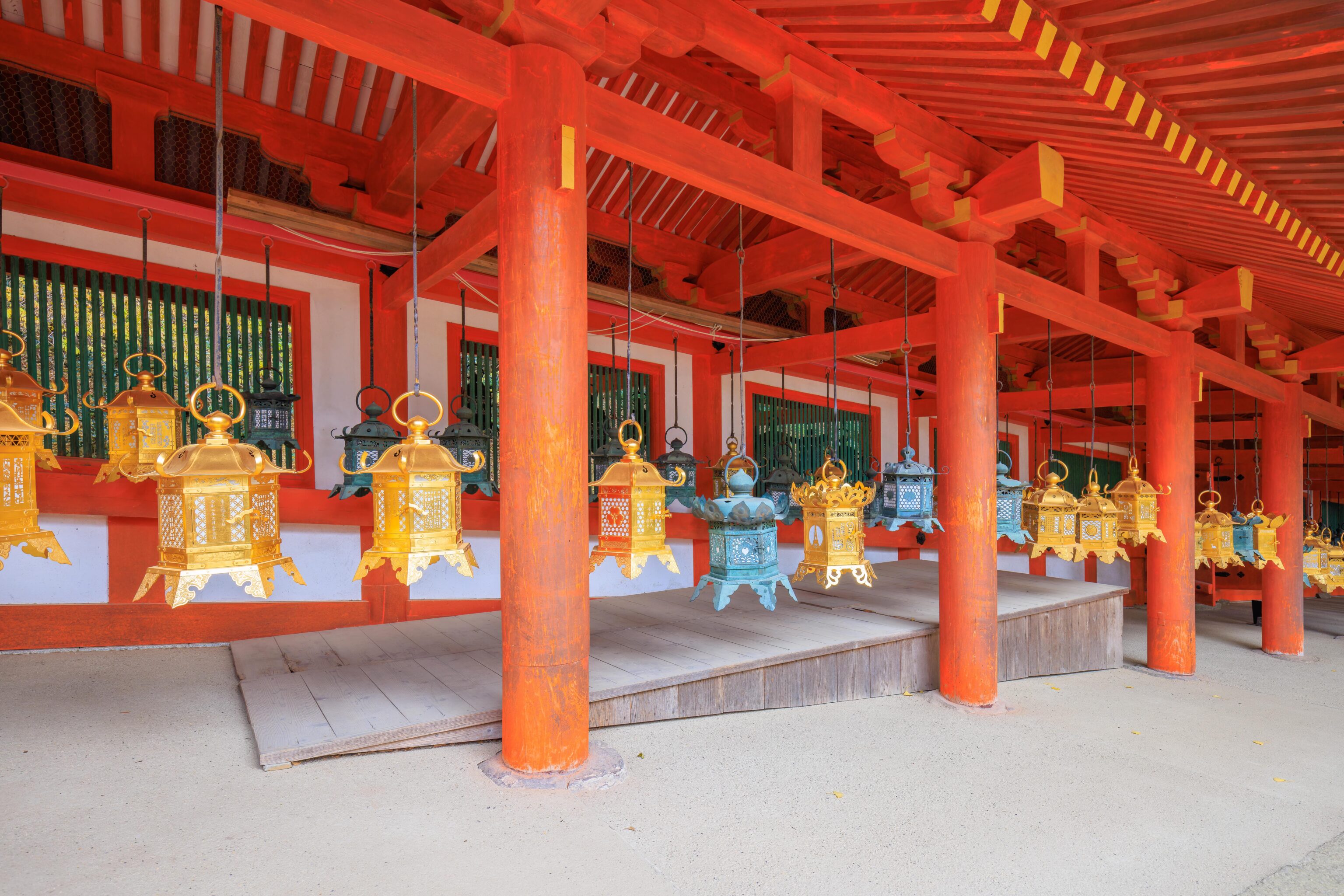

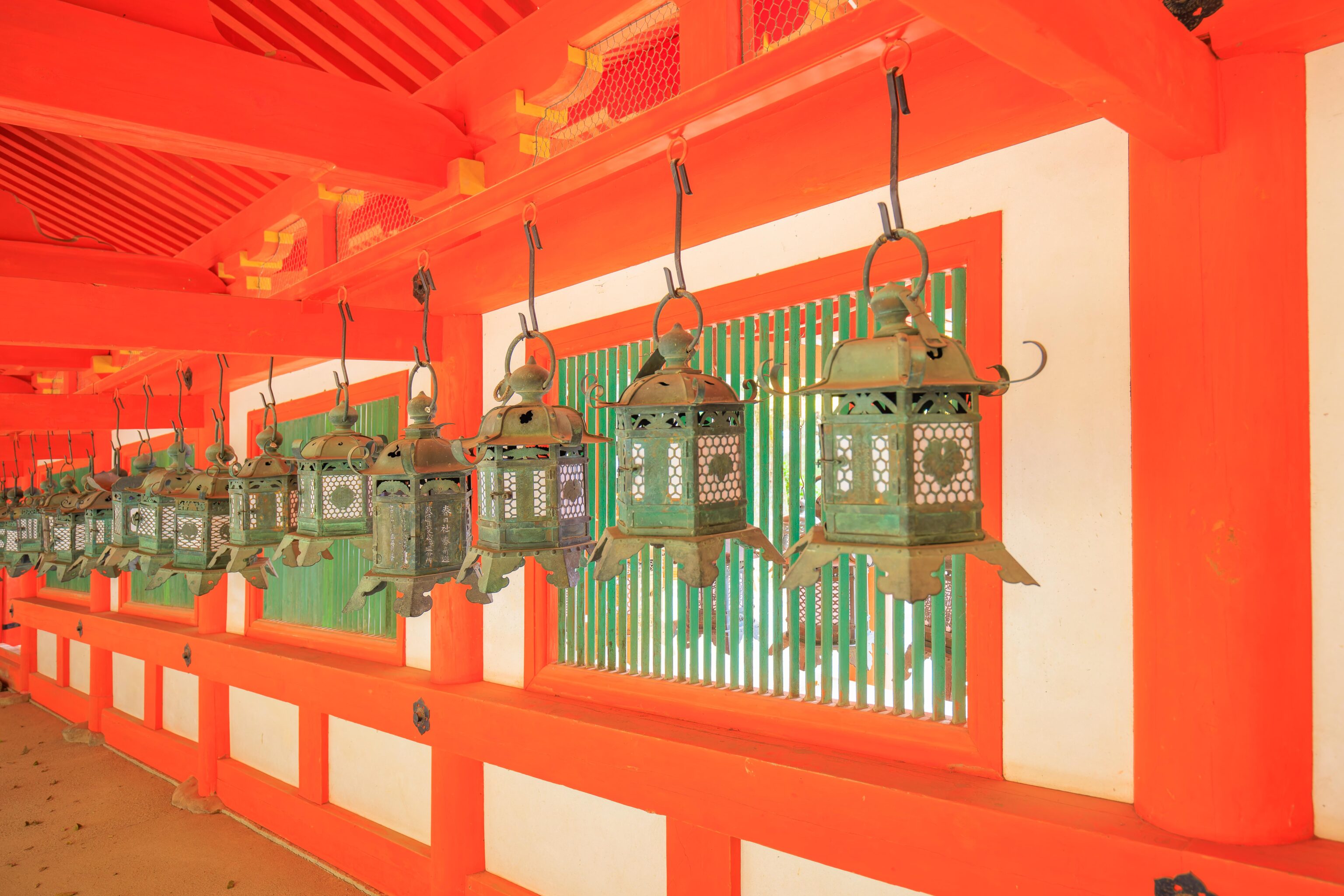
The most distinctive feature of this shrine is the many hanging lanterns. While their shapes are similar, they have varying designs on their sides. They are made of bronze and are paid for by donors5.
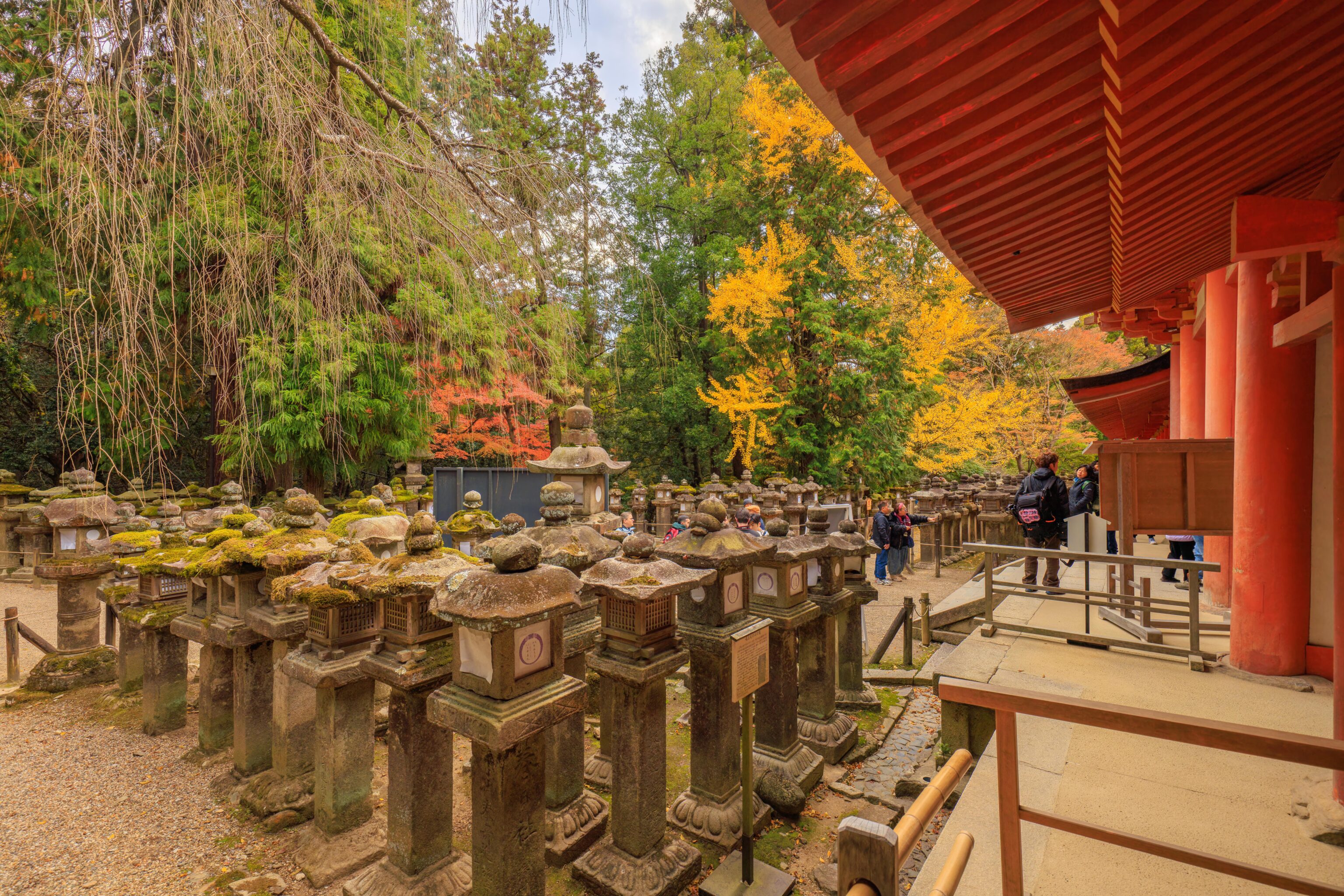
There are also stone lanterns in the shrine, including this rather large cluster of them!

Two larger bronze lanterns in front of a beautiful golden ginkgo tree.

The shrine also has these wooden lanterns, though the bronze hanging ones outnumber the other types by far.


We continued on the route until reaching this building.

It contains lit lanterns in a very dark room! The lanterns outside are only lit during two festivals occurring in February and August6. This room gives a hint of what the shrine looks like during those times.



We continued on, returning to where we first started.

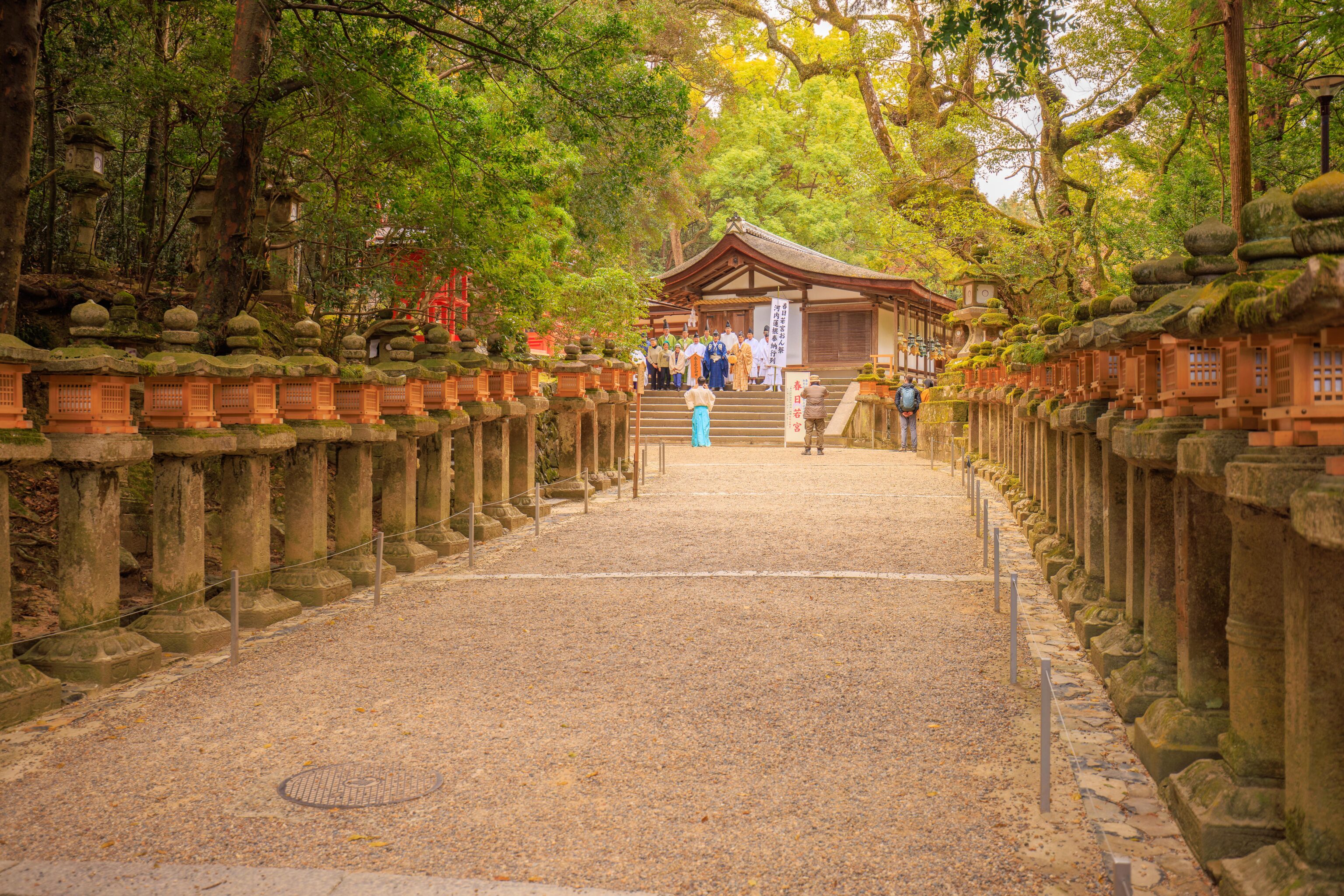
We continued on, walking to the south. We once again came upon a Shinto procession.



This area, still within the overall shrine grounds, had many lanterns that were a mix of stone and wood as well as some bronze hanging lanterns.
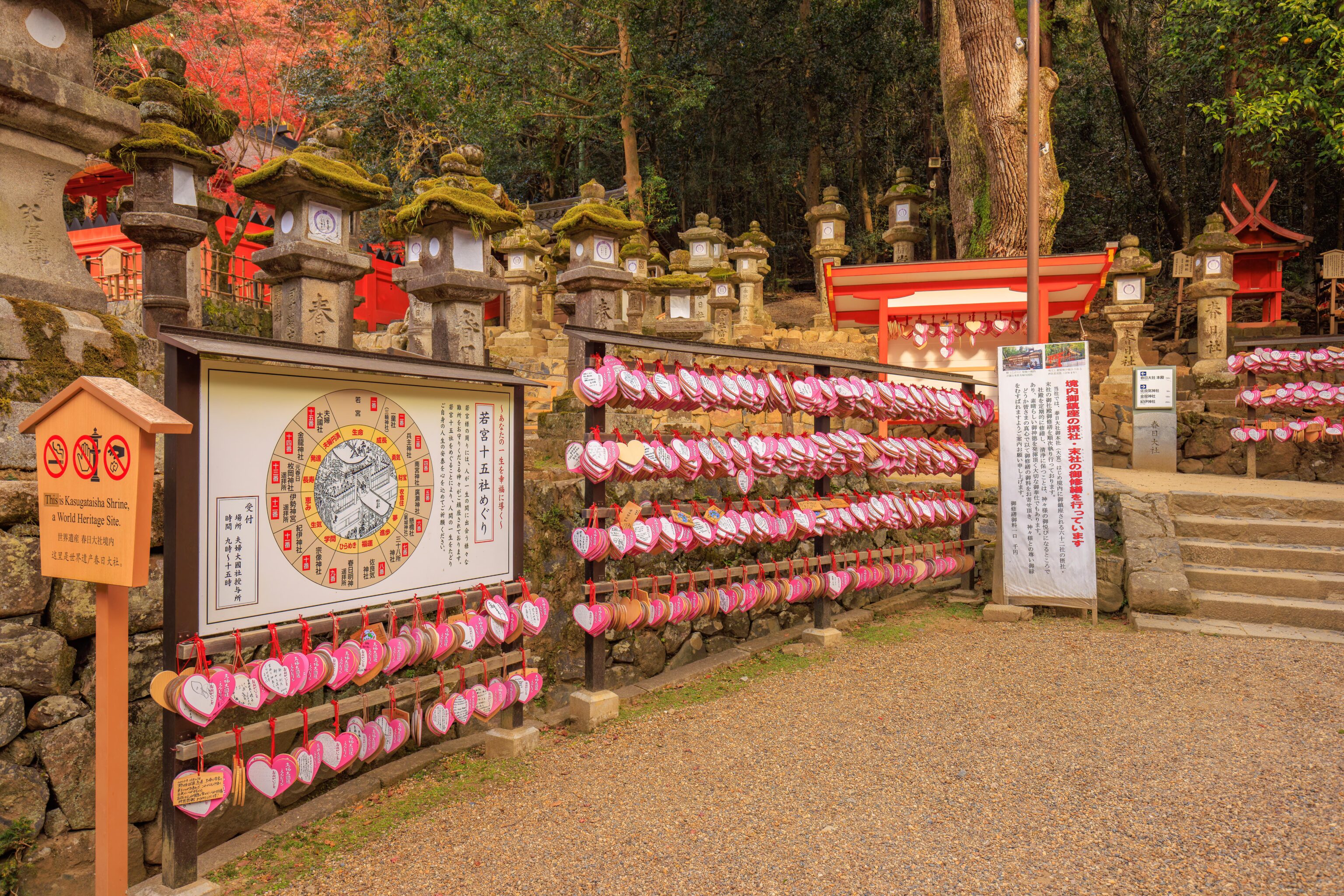
Temples and shrines sell ema, small wooden plaques that have some design or artwork specific to the temple or shrine. Visitors write their prayers, or wishes, on the plaque and then hang them on a rack like this one. They are at some point burned in a ritual. This smaller shrine within Kasuga Taisha has heart shaped ema.
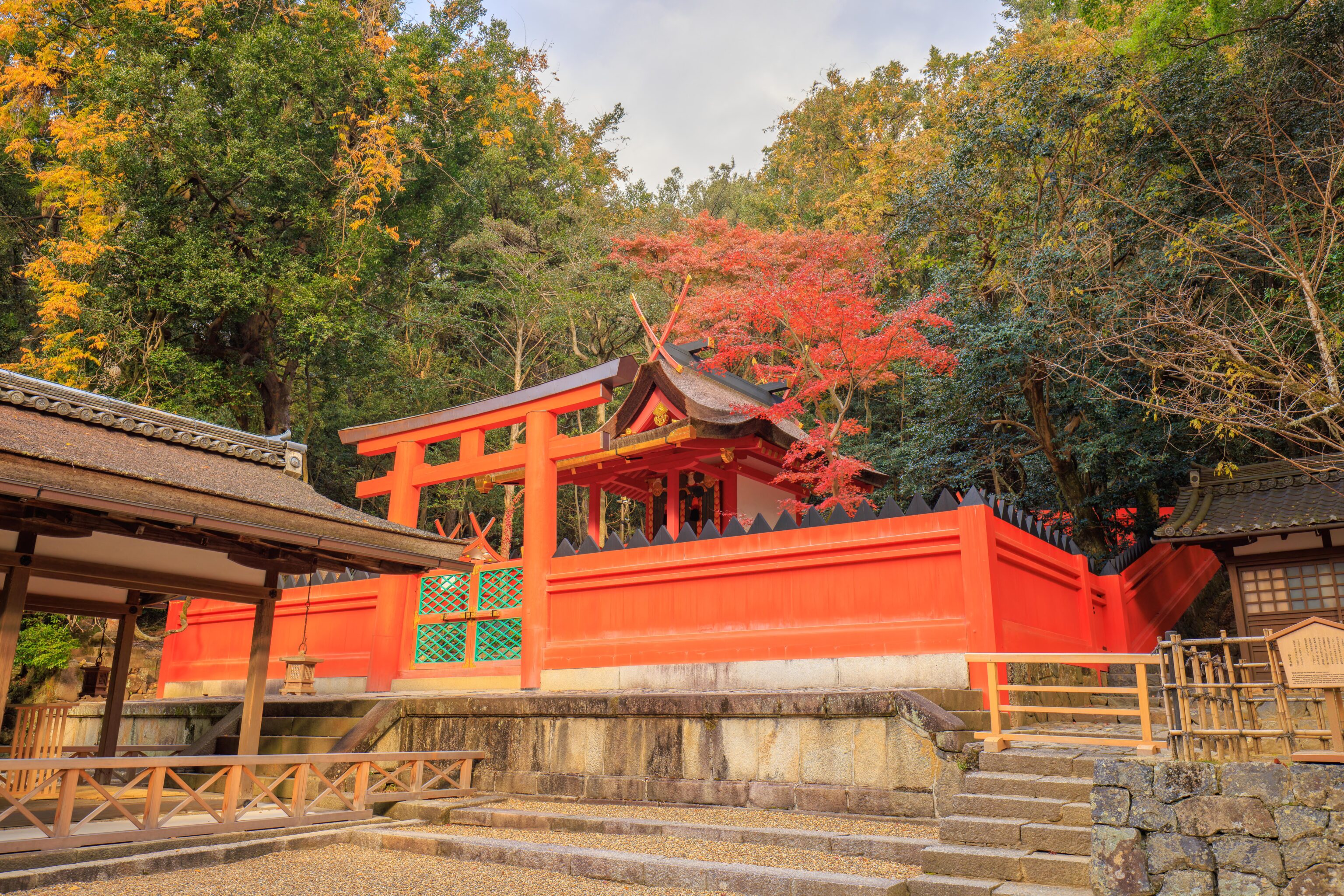
That’s about as far as we went. We started to backtrack, passing through the area that was previously occupied by the procession that we observed from afar.

A beautifully decorated folding screen in one of the buildings. Often, these cannot be photographed.



We started walking to the west, headed in the direction of the Kintetsu Nara train station.

We didn’t really see deer within the central area of the shrine. We passed by this one as we continued walking to the west.

We passed under a relatively large torii, though we still saw stone lanterns beyond it.

This one looks to be new!

This deer did not jump.
Late Afternoon in Nara
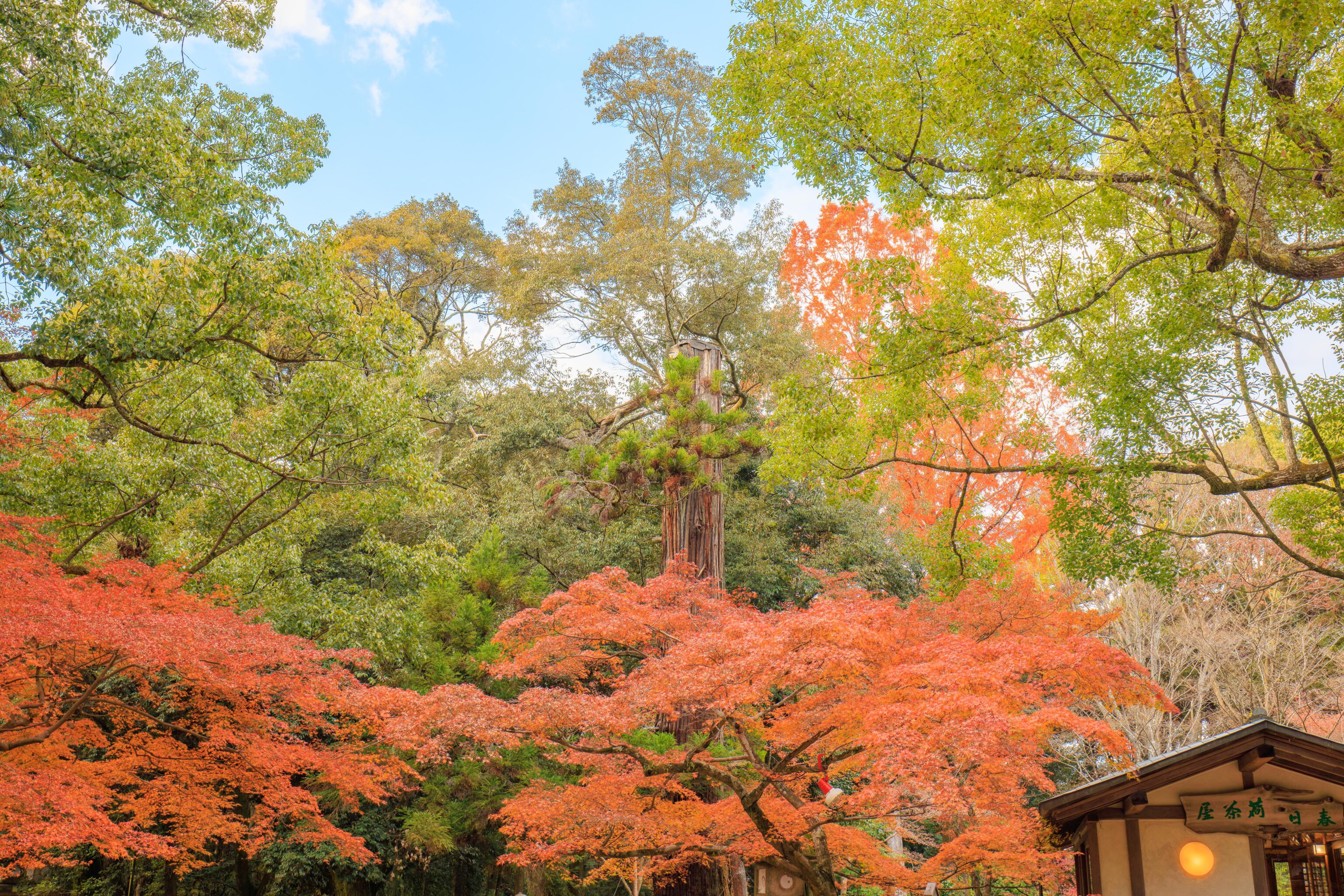
We passed by a bit of fall foliage as we continued walking to the west, now fully outside of the shrine grounds.
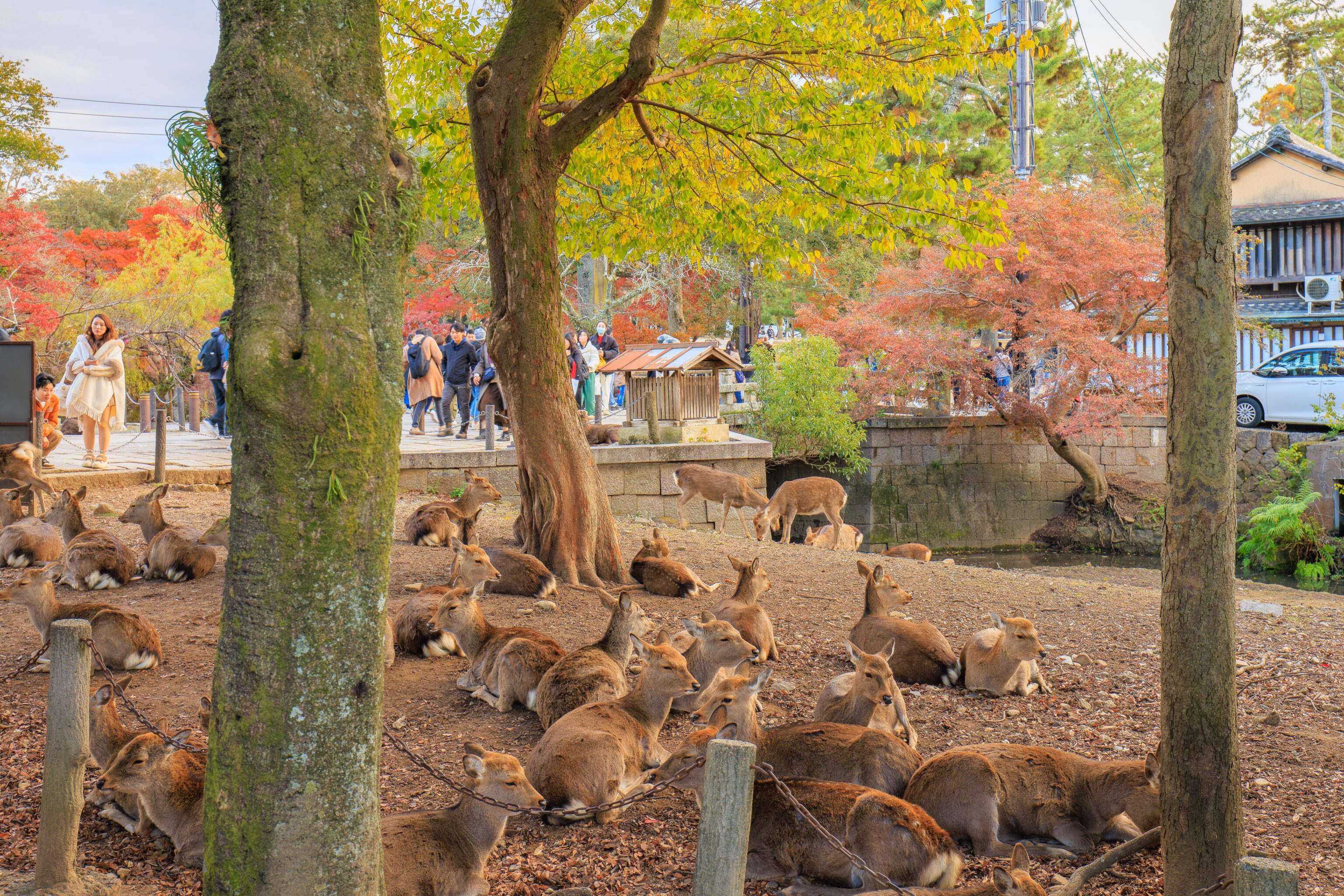
We passed by this large cluster of deer on our way to find the bathrooms! We had to go a bit out of the way as the closest ones seemed to be by the bus station near Todai-ji’s south gate.

After our brief detour, we continued walking to the west. We came across an unexpected sight, an autumn blooming cherry blossom tree! These trees are not common but can be seen in large numbers in the Aichi Prefecture7. Maybe one day we’ll go see them!

We got some beef on a stick from a vendor near the train station. Not the finest cut of beef but it was still satisfying, particularly as we were hungry. Time to find an early dinner!
We were undecided where to eat but saw that there were many restaurants near the train station. So, we continued in that direction.

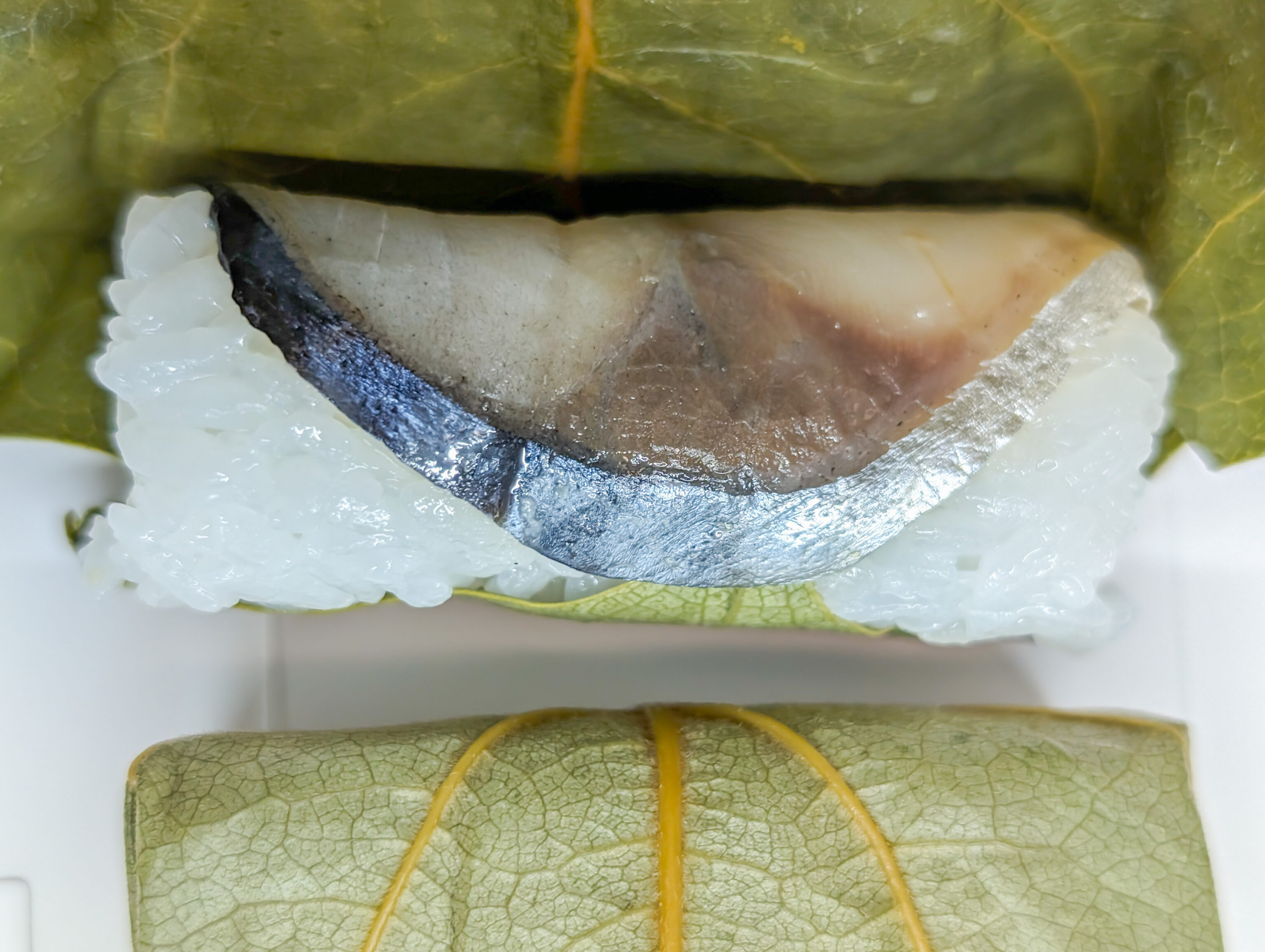

We bought a small box of three 柿の葉寿司 Kakinoha Zushi (persimmon leaf sushi), a type of sushi from the local Nara area. There are a few shops that sell this product but we bought from 柿の葉ずし総本家 平宗 Kakinoha Sushi Souhonke Hirasou, near the train station. This style of sushi is unique because it is wrapped in a persimmon leaf. It originally helped to help preserve the fish but also gives some flavor to the rice.
We continued on to the 東向商店街 Higashimuki Shopping Street at the end of the block, right by the train station. This type of covered shopping street is probably best described in English as a shopping arcade, though these don’t really exist in the US. This one is multiple blocks long and continues on as a different shopping street to the south. We only visited a small portion though.
We noticed many people queued at 中谷堂 Nakatanidou, a shop that sells fresh mochi rice cakes. It was good!

We decided to get dinner at すき焼きと牛まぶし ももしき Sukiyaki and Beef Mushi Momoshiki. This restaurant was on the second floor of a building on the shopping street near the train station.

The restaurant specializes in Yamato beef from the local Nara Prefecture. So, of course, that’s what we got!

The first dish we ordered was the charcoal seared red beef mabushi, which provides various ways of eating the beef over rice. The beef was a bit reminiscent of roast beef. It tasted best with all the provided toppings and with the dashi.


It came with a small bowl of soba noodles in broth. We also ordered a local plum wine which was very good.

We also ordered a sukiyaki.


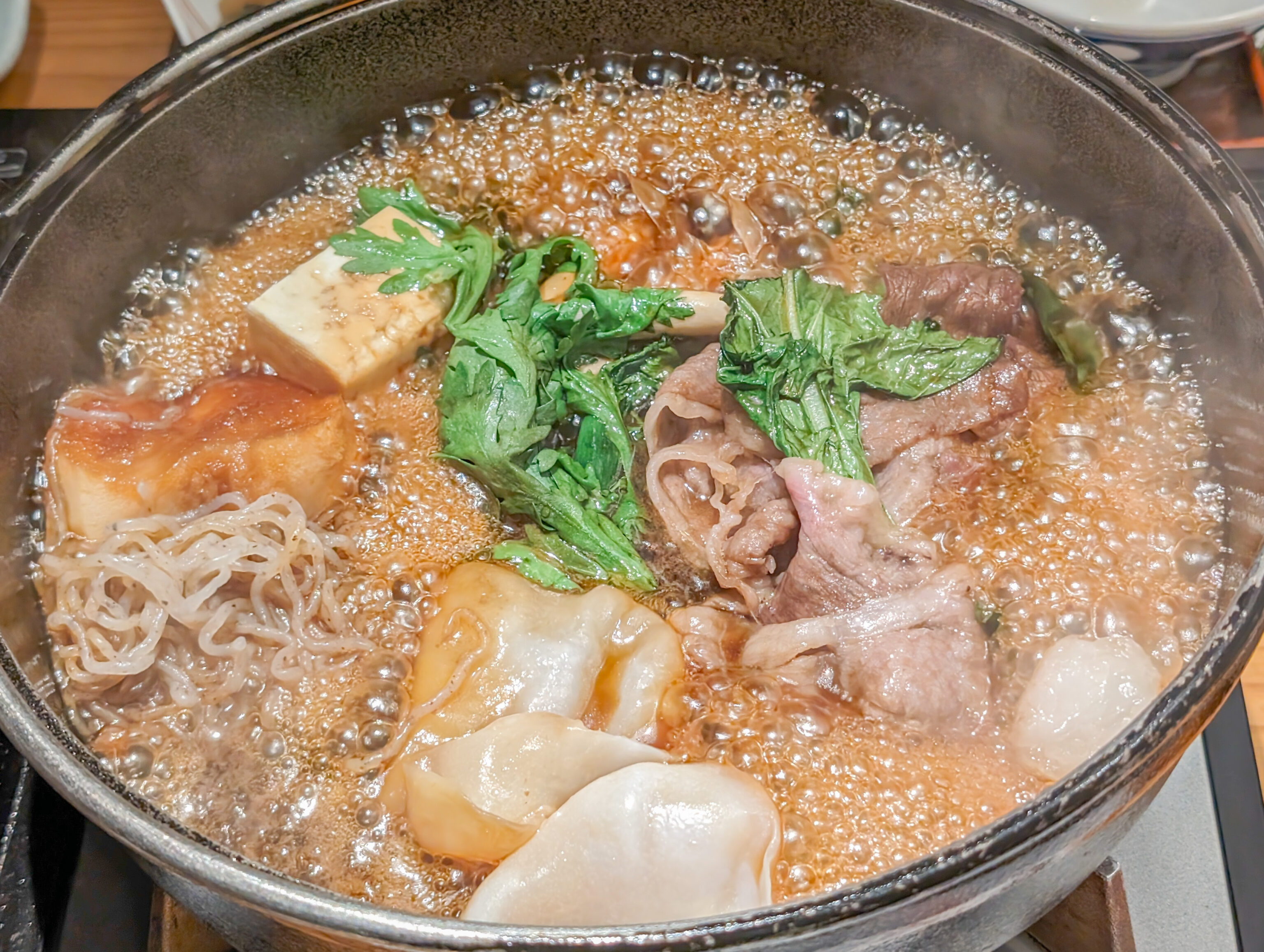
We’ve had sukiyaki prepared various ways now, this one was more traditional though with very little vegetables to provide water for soup, resulting in a dish that seemed to focus mainly on the beef. While it was very good, more ingredients would have been nice!
After eating, we headed into the train station to return to Kyoto. It took us awhile to figure out where to buy tickets for the limited express train. We eventually found the ticket machines on the far side of the station! We browsed the shops in the station for a bit after buying out tickets. We soon discovered that there were more ticket machines as well as a ticket office, we just didn’t pass by them on our way in!
Kyoto
After returning to Kyoto, we took the subway to Karasuma Station, two stops away from Karasuma Marutamachi and the Hyatt Place Kyoto where we have been staying. We did a bit of shopping and ended up at Nana’s Green Tea for some dessert.
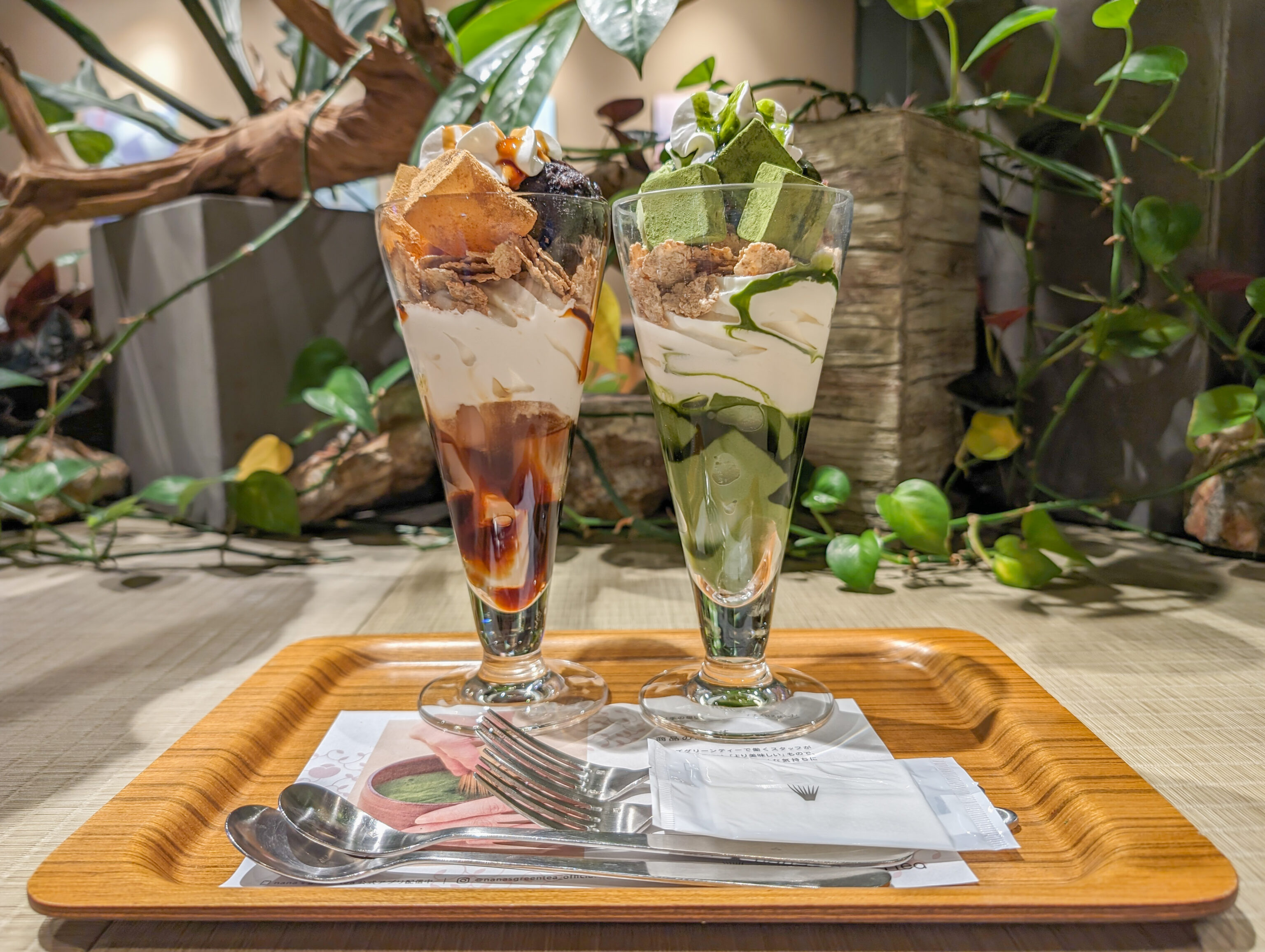
Nana’s Green Tea has many shops throughout Japan. We enjoyed two parfaits, 黒胡麻わらび餅パフェ Black Sesame Bracken-Starch Dumplings Parfait and 抹茶生チョコレートパフェ Matcha “Nama Chocolate” Parfait.
After dessert, we browsed the adjacent 大垣書店 Ogaki Bookstore before heading back to the Hyatt Place Kyoto to end the day.
Footnotes
- https://www.todaiji.or.jp/en/information/nandaimon/ ↩︎
- https://www.library.pref.nara.jp/nara_2010/0586.html ↩︎
- https://en.wikipedia.org/wiki/T%C5%8Ddai-ji ↩︎
- https://muza-chan.net/japan/index.php/blog/japanese-spiritual-architecture-sorin ↩︎
- https://www.japan-guide.com/e/e4102.html ↩︎
- https://www.visitnara.jp/venues/A00487/ ↩︎
- https://www.japan.travel/en/japans-local-treasures/obara-shikizakura-cherry-blossom/ ↩︎


